Leading up to previous trips to the Pinehurst area in 2002 and 2019, I had never heard much about Southern Pines Golf Club. I had heard of the course; I knew that it was one of the other Donald Ross courses in Pinehurst. But it didn’t garner much attention as a course worth adding as the 4th or 5th course on a trip to the area. Same was true for Mid Pines in 2002; I had heard of it and knew that it was a Ross course, but no one seemed to think to much of it so it was lower on my list of Pinehurst area courses to see than Tobacco Road or Pinehurst no.8 (I still might have liked it more than the latter…).
But sometime after my 2019 visit (or maybe before; I don’t remember the timing), I had heard that the family that owned Pine Needles, which had bought Mid Pines and restored to being the outstanding course that it now is, had bought Southern Pines and was hiring Kyle Franz to give the course the same treatment that he had given Mid Pines and Pine Needles. That of course made Southern Pines a course that I’d have to come back and see—which I saw more as an opportunity than a burden because Pinehurst is only about 5 1/2 hours from where I live in DC and Pine Needles and Mid Pines alone were already always worth the trip to see. Although it’s getting hard to justify the cost to play no.2 because they make you stay at the over-crowded and overly expensive Pinehurst resort, a trip to the Pinehurst area is plenty justified without it.
Never having looked into playing Southern Pines before, I didn’t know much about the course. But I assumed that it’d be similar to Pine Needles and Mid Pines, crossing rolling but not-too-hilly terrain with more moderate greens than no.2. I assumed wrong. Despite the shorter overall yardage, this is a more severe course than either Pine Needles or Mid Pines. I’m not sure that the property is much hillier that Pine Needles, but the routing is much tighter (more like Mid Pines), meaning that most holes cover pretty steep terrain and—critically—that the green sites are more severe.
It’s that latter element that, to me, makes Southern Pines feel very different from either Pine Needles or Mid Pines. Many of the greens are sited on hillsides and the most notable—and different—thing about them is how many have false fronts, and how severe these are. Both Pine Needles and Mid Pines are well-suited to shorter hitters who need to use the ground to run their ball onto greens. Southern Pines emphatically is not. You need to play an aerial game here. And a very precise one at that; missing short can result in your ball running 25 yards back down a hill on several occasion. And missing long means that your next shot will probably run 25 yards down that hill…
I wasn’t expecting ‘severity’ to be the word that I’d associate with Southern Pines, but it is. It reminds me of Tobacco Road a bit in that while they don’t look similar and the design elements are quite different, there are a lot of shots that if you miss, it’s easy to run up a big score. I’m not a big fan of that. But my bigger issue with Southern Pines is the amount of times that you face the same scenario: an approach to a green with a severe false front and nowhere else particularly good to miss. By my count, this applies to at least 7 or 8 greens. So I came away with far less affection for this course than either Pine Needles or Mid Pines. But that doesn’t make it bad and, in a sense, is what makes it an essential part of a Pinehurst trip; variety is a good thing.
But one hole which certainly isn’t severe is the ~360 yard first. Ross opening holes tend to be a gentle handshake; this is a downright effeminate (sorry…) one.
Many can probably get pretty close to the green with their drive but I’d advise against this—bunkers pinch the fairway about 75 yards short of the green. Best to lay back to your favorite yardage; you definitely don’t want to leave your approach above the hole here.
But sometime after my 2019 visit (or maybe before; I don’t remember the timing), I had heard that the family that owned Pine Needles, which had bought Mid Pines and restored to being the outstanding course that it now is, had bought Southern Pines and was hiring Kyle Franz to give the course the same treatment that he had given Mid Pines and Pine Needles. That of course made Southern Pines a course that I’d have to come back and see—which I saw more as an opportunity than a burden because Pinehurst is only about 5 1/2 hours from where I live in DC and Pine Needles and Mid Pines alone were already always worth the trip to see. Although it’s getting hard to justify the cost to play no.2 because they make you stay at the over-crowded and overly expensive Pinehurst resort, a trip to the Pinehurst area is plenty justified without it.
Never having looked into playing Southern Pines before, I didn’t know much about the course. But I assumed that it’d be similar to Pine Needles and Mid Pines, crossing rolling but not-too-hilly terrain with more moderate greens than no.2. I assumed wrong. Despite the shorter overall yardage, this is a more severe course than either Pine Needles or Mid Pines. I’m not sure that the property is much hillier that Pine Needles, but the routing is much tighter (more like Mid Pines), meaning that most holes cover pretty steep terrain and—critically—that the green sites are more severe.
It’s that latter element that, to me, makes Southern Pines feel very different from either Pine Needles or Mid Pines. Many of the greens are sited on hillsides and the most notable—and different—thing about them is how many have false fronts, and how severe these are. Both Pine Needles and Mid Pines are well-suited to shorter hitters who need to use the ground to run their ball onto greens. Southern Pines emphatically is not. You need to play an aerial game here. And a very precise one at that; missing short can result in your ball running 25 yards back down a hill on several occasion. And missing long means that your next shot will probably run 25 yards down that hill…
I wasn’t expecting ‘severity’ to be the word that I’d associate with Southern Pines, but it is. It reminds me of Tobacco Road a bit in that while they don’t look similar and the design elements are quite different, there are a lot of shots that if you miss, it’s easy to run up a big score. I’m not a big fan of that. But my bigger issue with Southern Pines is the amount of times that you face the same scenario: an approach to a green with a severe false front and nowhere else particularly good to miss. By my count, this applies to at least 7 or 8 greens. So I came away with far less affection for this course than either Pine Needles or Mid Pines. But that doesn’t make it bad and, in a sense, is what makes it an essential part of a Pinehurst trip; variety is a good thing.
But one hole which certainly isn’t severe is the ~360 yard first. Ross opening holes tend to be a gentle handshake; this is a downright effeminate (sorry…) one.
Many can probably get pretty close to the green with their drive but I’d advise against this—bunkers pinch the fairway about 75 yards short of the green. Best to lay back to your favorite yardage; you definitely don’t want to leave your approach above the hole here.
The par 5 second plays up and over a hill and if you can get your drive running, you can easily get within distance to reach the green. And you should go for the long ball because there isn’t too much trouble.
The layup is simple; just leave it at the base of the hill about 90 yards short of the green. This is the first of many greens with a severe false front. I (fortunately) didn’t find out for myself, but if you miss your approach short, the ball might come about 90 yards back down the hill. Just tell your playing partners that you wanted to use the whole backstop for your layup…
By the 200 yard par 3 third, you’re definitely getting a sense of the precision required in hitting into these greens. The green is heavily bunkered, has a pretty good false front, and slopes pretty good from back-to-front. Front pins are tough although they’re in a shallow bowl that’ll hold your ball if you hit a good shot.
Four may only be about 385 yards (I don’t even remember seeing the 435 back tee that’s on the card…which is just as well), but it’s about the most difficult hole of that length that I’ve seen. The drive is tricky for someone who fades the ball with the bunkers on the right although there is some room between the first and second set.
The approach is one of the more uphill shots you’ll likely face this side of Cleeve Hill and Painswick and the green is quite shallow. Simply put, you need to hit a very precise iron here. Definitely don’t go at a left pin because this is where the green is at its narrowest.
The approach is one of the more uphill shots you’ll likely face this side of Cleeve Hill and Painswick and the green is quite shallow. Simply put, you need to hit a very precise iron here. Definitely don’t go at a left pin because this is where the green is at its narrowest.
At this point, there’s a choice of two holes that you can play next. There’s a par 5 which is the fifth hole on the card. Or there’s a short par 3 off to the left that’s apparently an old Ross hole that had been left fallow but has been revitalized, if not restored. It’s about 130 yards to a green that slopes pretty good from right-to-left and has a bowl at the left side. It’s a good hole, but it felt to me like something from one of the new par 3 courses that you’re supposed to play in bare feet. Maybe I would have liked it more if I had done that (or hit better shots…).
The real fifth hole is a long, downhill par 5. Actually it doesn’t play that long because there’s a massive downslope in the fairway that’ll bring your ball about 80 yards closer to the green.
From here, we have one of the course’s best approach shots. A waste area bisects the fairway ~100 yards short of the green and trouble runs up its right. But if you can carry this, you can run the ball all the way onto the green. The green slopes back-to-front but doesn’t have any of the severity at its edges that many of the others do. Plus it has excellent interior contour. Great hole.
While very difficult, I also thought that the long par 4 sixth was a great hole. The drive is very challenging and downright cruel to anyone who hits a draw. The bunker on the left is probably only about 250 from the tips, so you’ll need to hit a fade off it. The approach is gently uphill to a big green that does have a false front, but one that’s much less severe than others. It also has excellent interior contour.
Seven is a par 3 of about 195 from the tips where once again, you just have to hit the green. There’s a massive hollow short and the odds of hitting the green from one of the back bunkers are about as good as the odds of hitting it from the tee. I think this hole would work better from the ~160 yard middle tees. Ever par 3 here save for hole 5a was a 5 or 6 iron for me from the tips and making this one a bit shorter, especially given the severity of the green site, would add some variety.
Also difficult, but certainly not in need of any tweaking, is the 390 yard par 4 eighth. This is a very difficult driving hole with a bunker about 250 out on the right and a fairway that slopes away on both sides (into trees on the left).
Although it’s probably more notable for its beauty than its shot interest, the former is more than enough to make the approach an excellent one. Apparently you couldn’t see the lake right of the hole before because there was a forest. I’m as much a tree lover as anyone, but I can’t imagine that it wasn’t worth it to cut it down…unless there were old-growth longleaf pines or baldcypress down there.
Nine is another tough par 3 with a severe false front. Again, long is trouble but the front right bunker wasn’t too bad (although it’s a terrible shot to end up there).
The short par 4 tenth has a new tee just behind the ninth green which makes for a—to me—very pleasing semi-blind drive over a waste area. You’re advised to hit a conservative tee shot from here though as the fairway slopes pretty good from left-to-right and the angle means that you’re playing slightly down the slope. Another uphill approach to a heavily contoured green with a pretty good false front.
Now the reason that we played the alternate short par 3 fifth was that they were doing work on the short par 4 eleventh and it was out-of-play. Too bad; it’s one of the best looking holes on the course. At 325 yards, long hitters can go for the green and it’s a very interesting shot because you have to decide how much of the bunkers on the right you can carry. The ground feeds toward the green but if you pull it, it’s easy to run through the fairway into bunkers.
The 425 yard twelfth is in a flatter portion of the course and reminds me of something you might find on no.2 or Mid Pines. Bunkers encroach on the left, demanding an accurate drive. The approach is gently uphill over a waste area to a green with a gentler false front. There’s also an opportunity to kick one on using the high ground left of the green. This hole is much subtler than most others on the course but no less interesting.
Less subtle, but also interesting is the 420 yard thirteenth. Bunkers encroach on the right this time but there’s a bit more room.
However, it’s all about the approach here, which is the most unusual on the course. It’s downhill and the green is open in front, making this one of the few greens that you can run a ball onto. But there’s also a nasty mound in the front middle of the green that can kick your ball in any direction—including through the green as I unfortunately learned.
However, it’s all about the approach here, which is the most unusual on the course. It’s downhill and the green is open in front, making this one of the few greens that you can run a ball onto. But there’s also a nasty mound in the front middle of the green that can kick your ball in any direction—including through the green as I unfortunately learned.
Fourteen is a bit more forgiving than the other par 3s. While there’s another severe false front, there’s much more room between the bunkers and you can use the slope in the left side of the green to feed the ball toward right pins. This was probably my favorite of the par 3s because you can play it in a greater variety of ways.
Fifteen is an excellent shorter (~500 yards) par 5. It’s a generous fairway and you’ll want to take advantage because if you hit a short drive here, you might have trouble carrying the cross bunkers ~80 yards short of the green.
Again, this green has a pretty good false front although I mind it less here than on some of the other holes because tee-to-green, this one isn’t so difficult. It’s a good type of hole to have a severe green site because you’re either going for it in two—in which case it’s reasonable to demand a solidly struck shot—or you have a short third…and the same applies.
Sixteen is an interesting short (315 yard) par 4. The fairway is quite wide if you layup, but narrows as you get closer to the green. Still, it’s not so narrow and I think it’s pretty sensible for long hitters to go for it here.
The green is narrow but deep. It’s best to be coming in from online with the green short but if you go for it, a pitch from the right also isn’t bad because the green tilts pretty good from left-to-right. A straight-forward, but well-conceived hole.
The seventeenth is also well-conceived, albeit a bit less straight-forward. The main difficulty here is with the drive; there are staggered bunkers left then right and you need an accurate drive to avoid them. It’s best to be in the right side of the fairway because the green opens up from this angle.
The approach is to what’s probably my favorite green on the course. While left and long are no good as the ground clearly slopes from back-left to front-right, the contouring short and right of this green is subtle and excellent; some of my favorite of any of Franz’s Pinehurst-area renovations.
Other than a par 3, a medium-short par 4 is probably the rarest type as a finisher, but Southern Pines’ is excellent. It’s one of the best driving holes on the course; it’s only about 220 to carry the bunker on the left but pull it at all and you’ll hit the trees, push it and the slope of the fairway will likely take it into the right bunkers. It’s a simple layup but hit driver and it demands either a very precise straight ball or a draw.
The approach is…yep, to another hilltop, false front green. I like this one in its own right for a finishing hole but by this point, it’s been a bit too much of the same thing for me.
And that’s my main criticism of Southern Pines: the approach shots lack a bit in variety. It’s a very good driving course, with a variety of views, bunker configurations, and slopes. But more than half of the greens are sited on hillsides with steep false fronts and bunkers around the rest making it a very demanding, but not varied test of iron play. 4 or 5 greens like this would be great but at least half of them are and I think that’s too much.
It just occurred to me that one of the issues might be that like on all of today’s restorations, there’s probably a lot more short grass around the greens than on the previous version. I don’t know for sure whether that’s true because I didn’t play the previous version, but I bet it is. And this might be a case where rough around the greens, or at least a few of them would have been better because it wouldn’t have resulted in so much severity.
Given the quality of today’s bermuda grass, I bet that even if there had been short grass around the green in Ross’s time, they would have played nothing like this—they would have been shaggier and the ball would have been more likely to hold up. So I suspect that I’d prefer the green complexes if they were somewhere between the current version and what I assumed the old version was—some surrounded by short grass, some with a bit more rough.
Although for me, the lack of variety and severity keep Southern Pines below Mid Pines and Pine Needles, they contribute to the overall variety in the Pine Needles stable of courses. I came here expecting something similar to Pine Needles and Mid Pines and certainly did not get that. Like I said, in terms of difficulty, it reminded me more of Tobacco Road. While that means that taken in itself, I don’t like Southern Pines as much as some of the other courses in town, it also means that it’s an excellent complement to them. Despite my criticisms, I still think that Southern Pines is an excellent course. And perhaps all the better that it’s different from its new siblings.
It just occurred to me that one of the issues might be that like on all of today’s restorations, there’s probably a lot more short grass around the greens than on the previous version. I don’t know for sure whether that’s true because I didn’t play the previous version, but I bet it is. And this might be a case where rough around the greens, or at least a few of them would have been better because it wouldn’t have resulted in so much severity.
Given the quality of today’s bermuda grass, I bet that even if there had been short grass around the green in Ross’s time, they would have played nothing like this—they would have been shaggier and the ball would have been more likely to hold up. So I suspect that I’d prefer the green complexes if they were somewhere between the current version and what I assumed the old version was—some surrounded by short grass, some with a bit more rough.
Although for me, the lack of variety and severity keep Southern Pines below Mid Pines and Pine Needles, they contribute to the overall variety in the Pine Needles stable of courses. I came here expecting something similar to Pine Needles and Mid Pines and certainly did not get that. Like I said, in terms of difficulty, it reminded me more of Tobacco Road. While that means that taken in itself, I don’t like Southern Pines as much as some of the other courses in town, it also means that it’s an excellent complement to them. Despite my criticisms, I still think that Southern Pines is an excellent course. And perhaps all the better that it’s different from its new siblings.
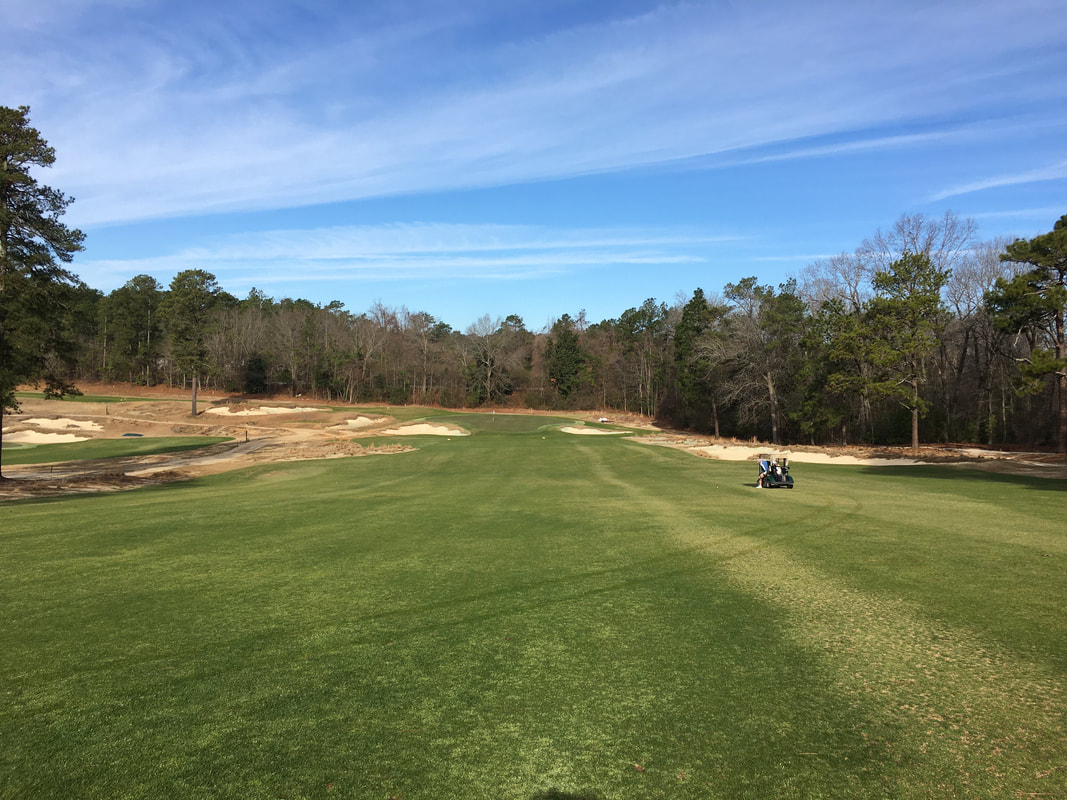
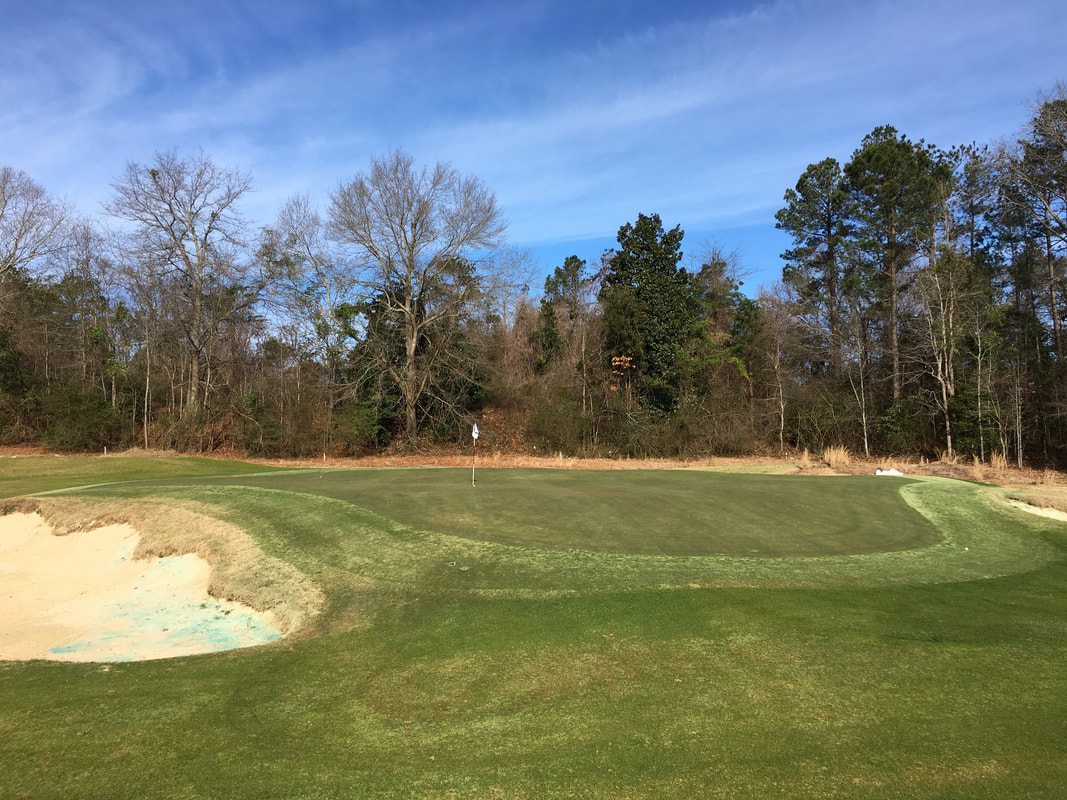
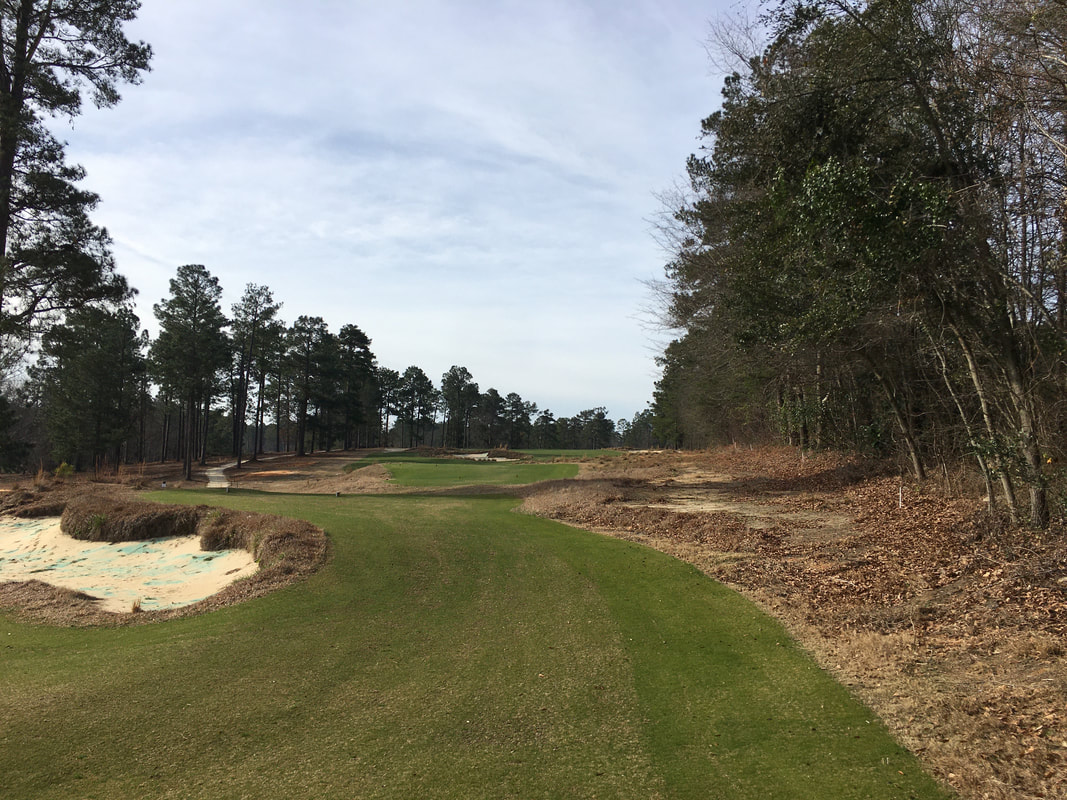
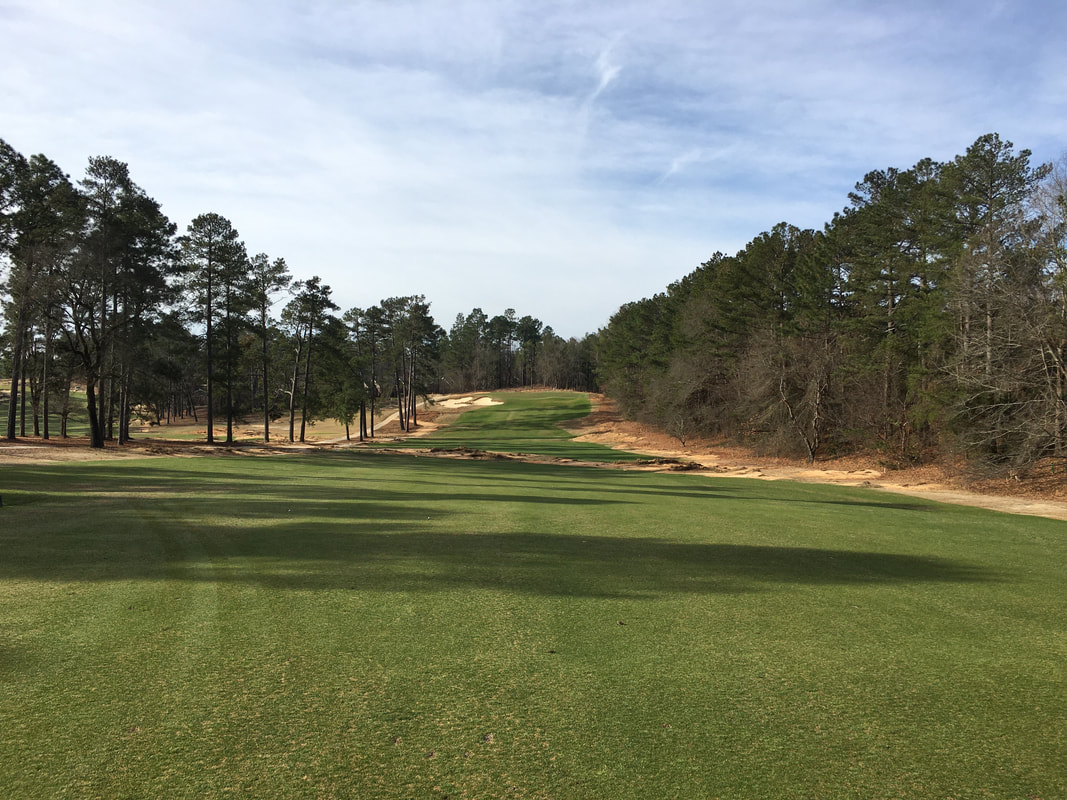
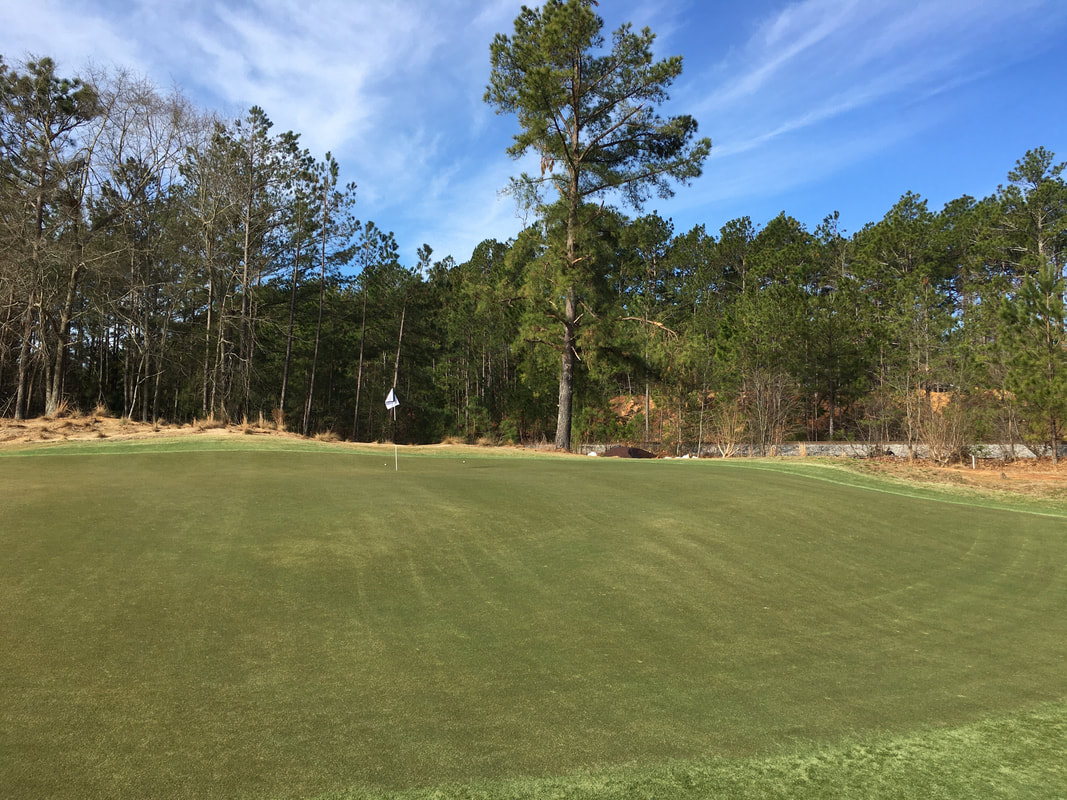
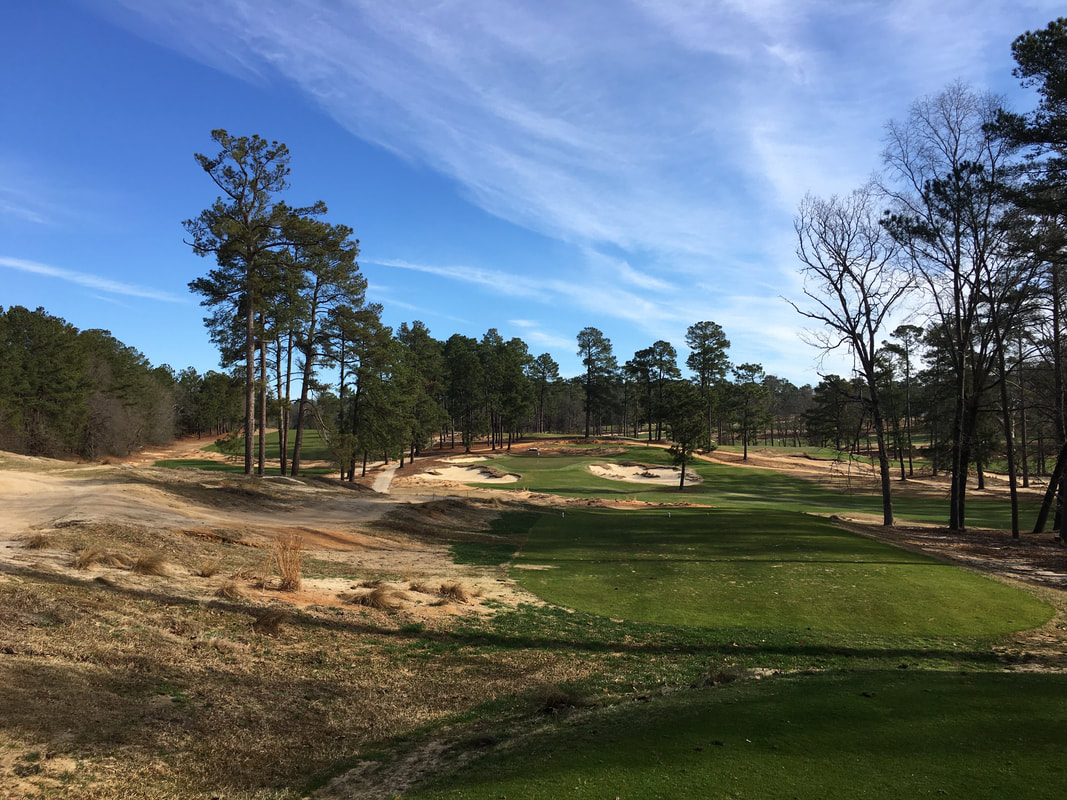
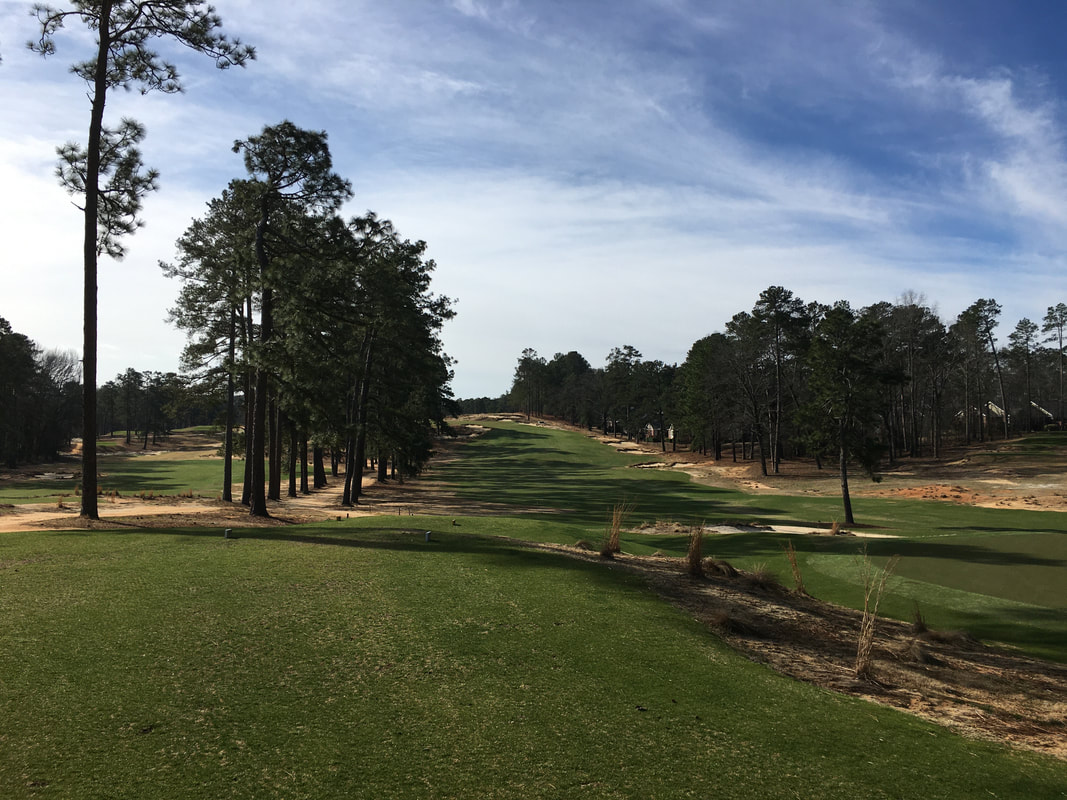
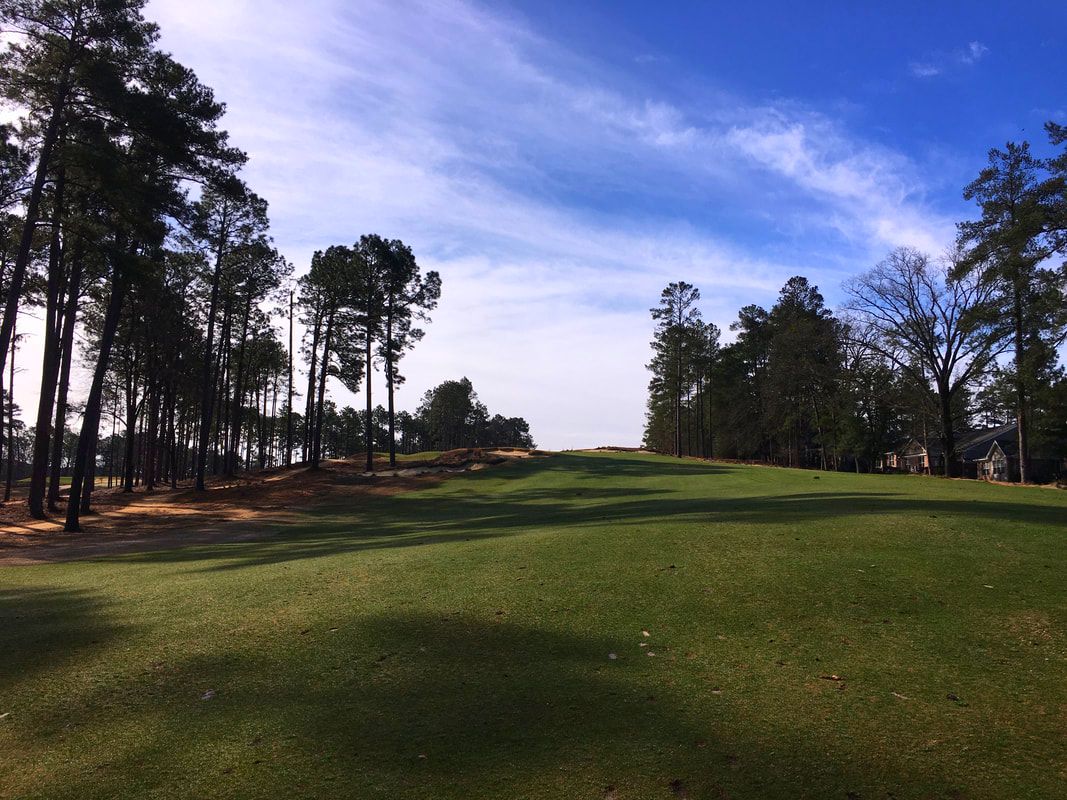
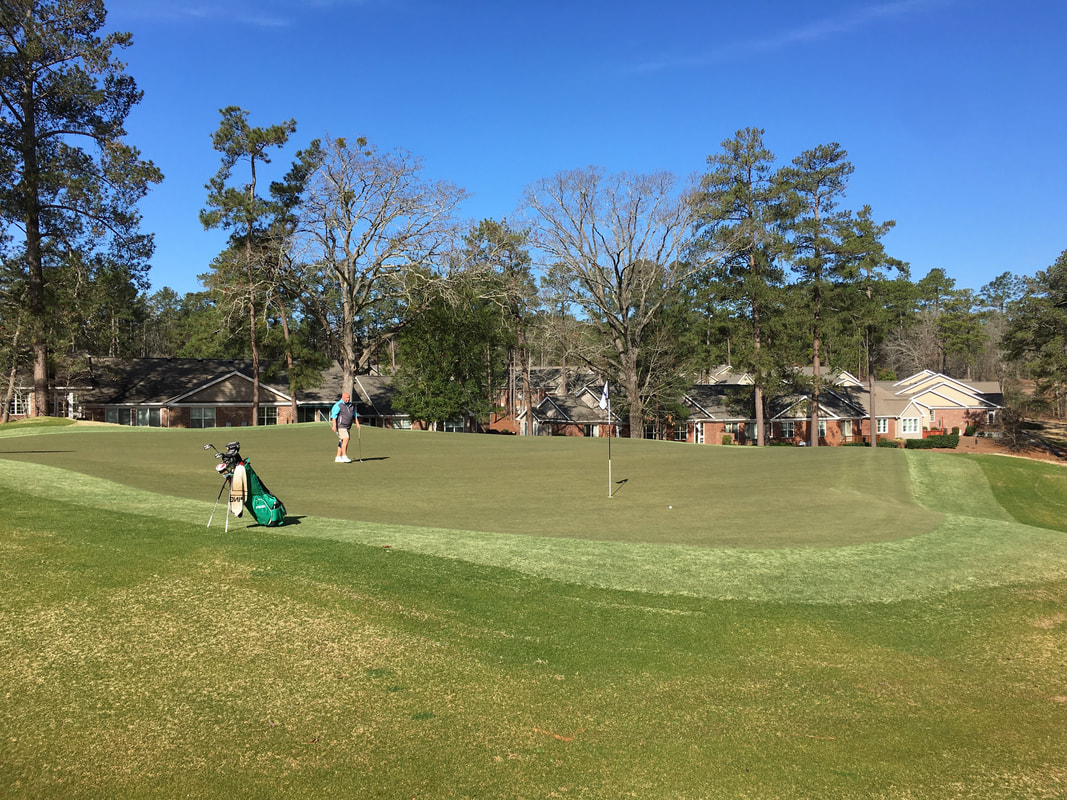
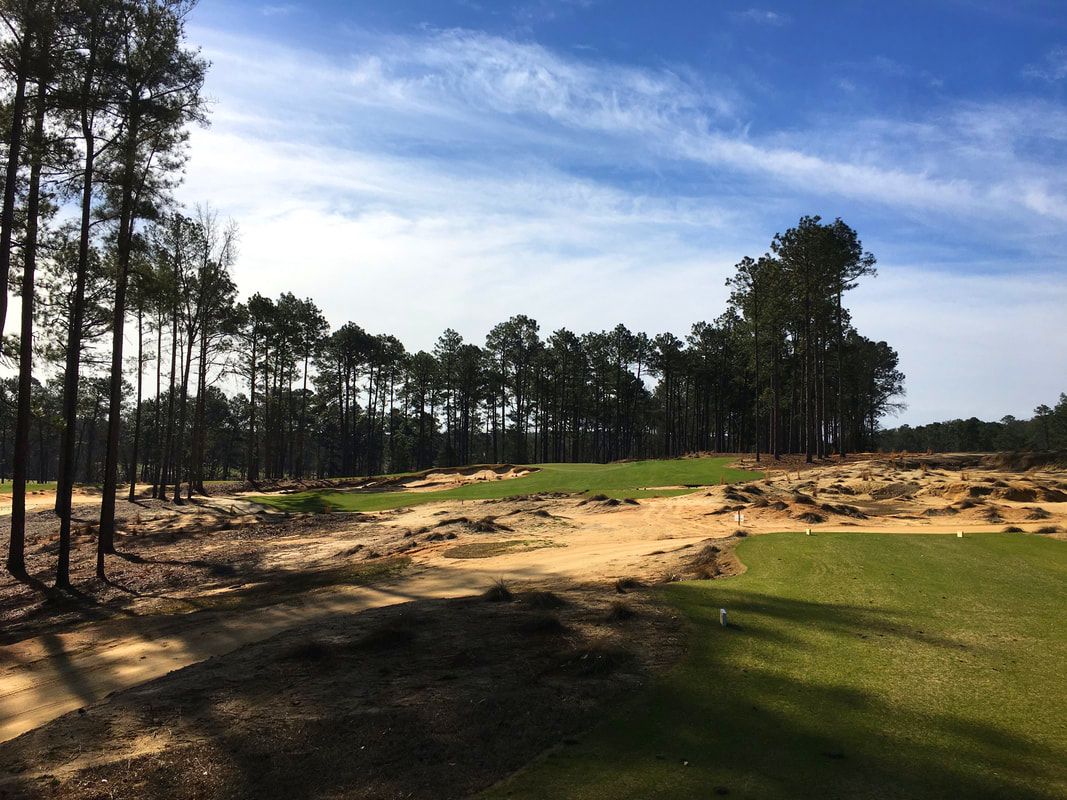
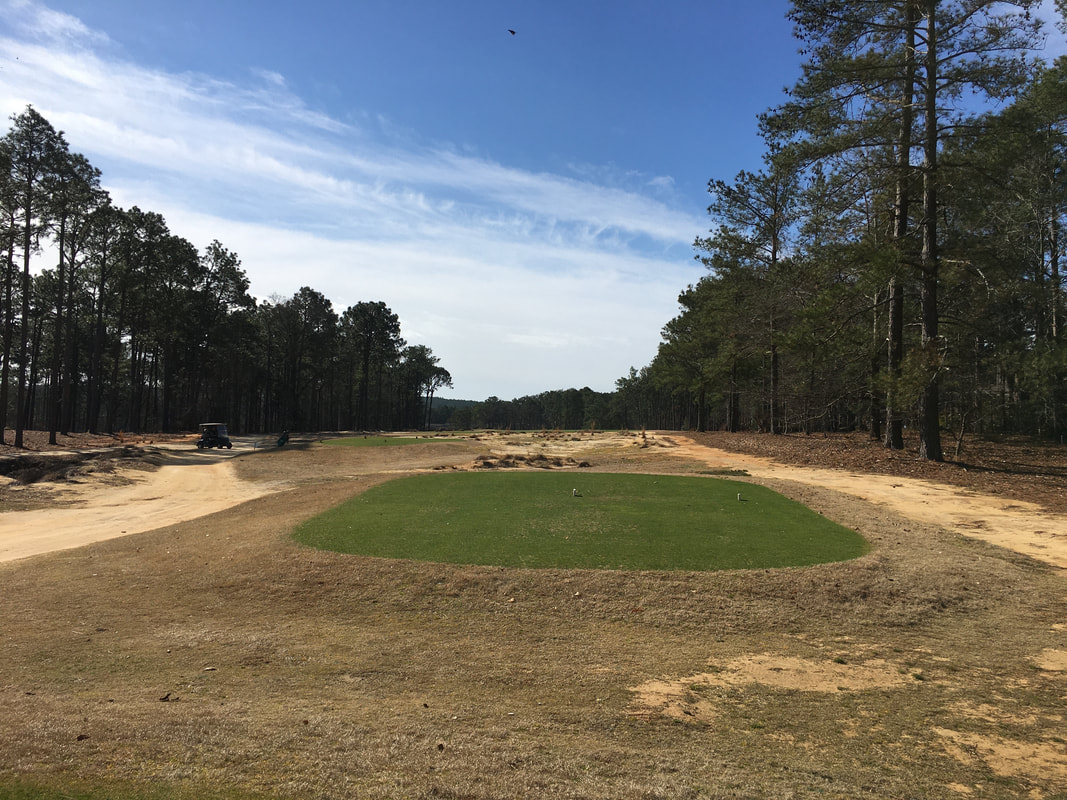
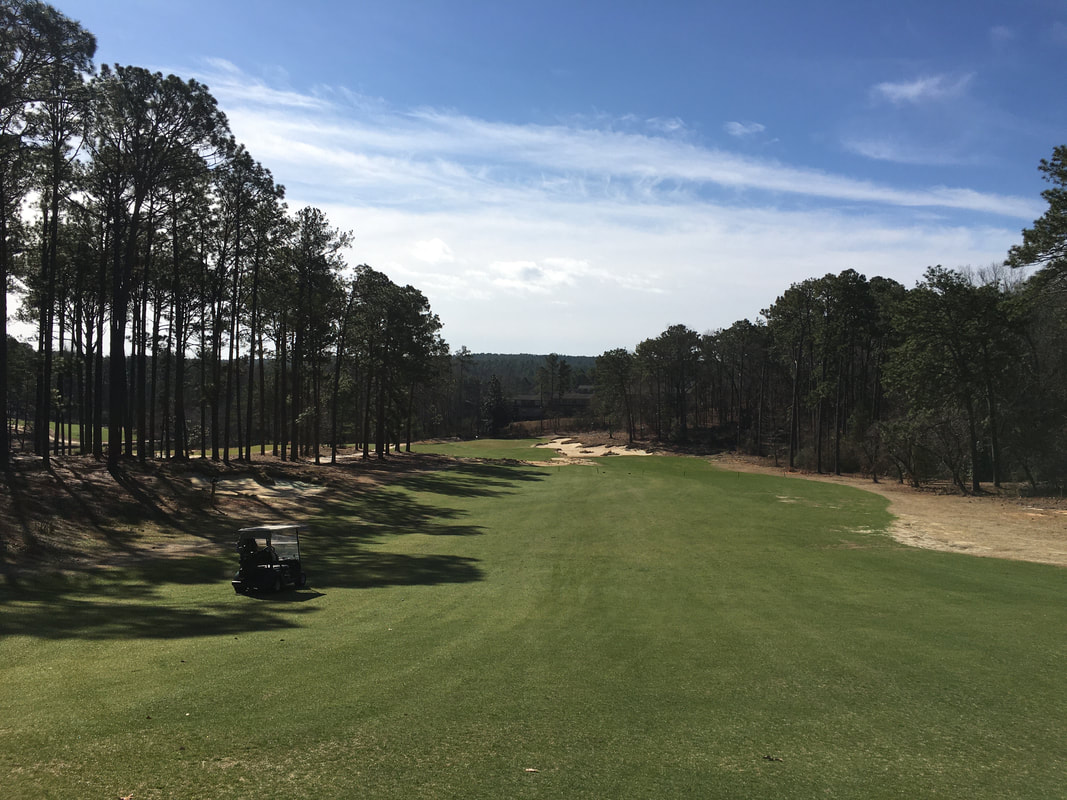
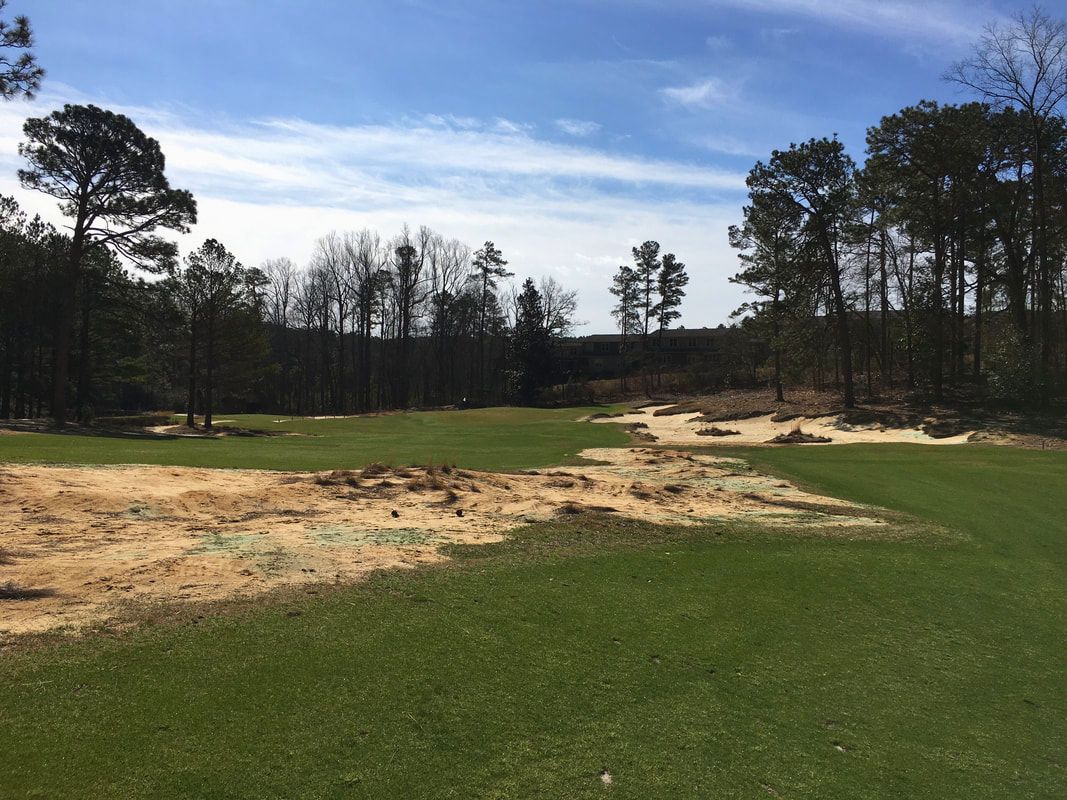
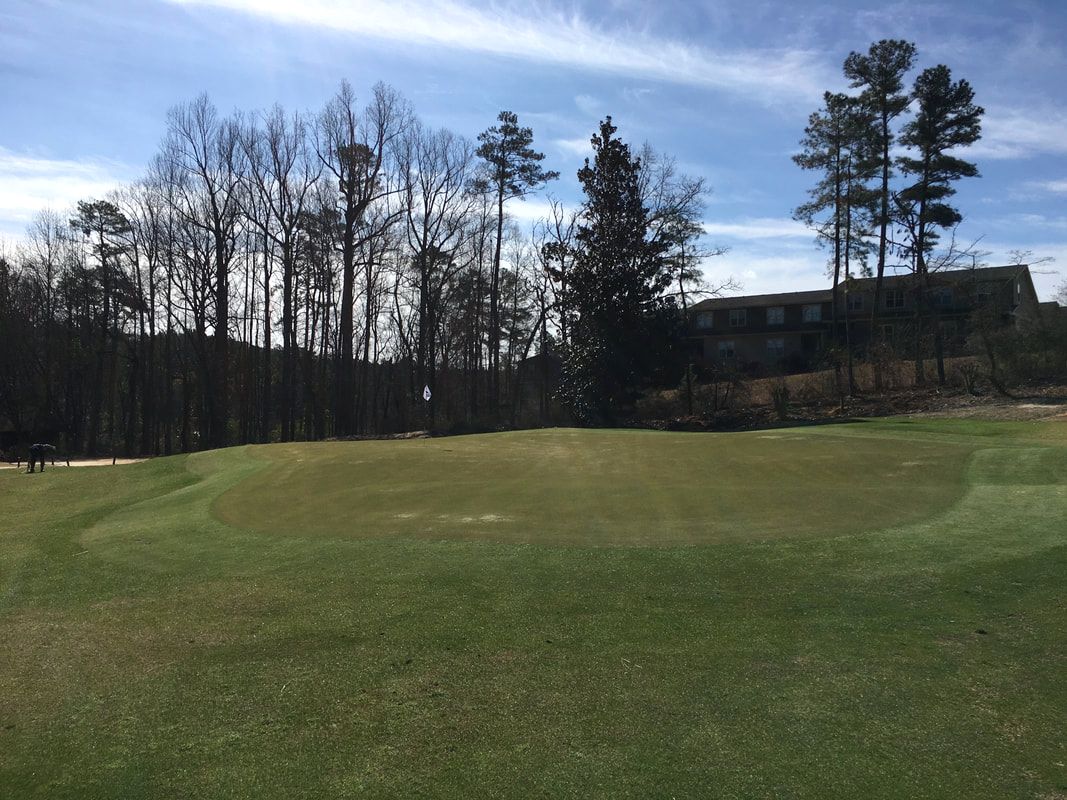
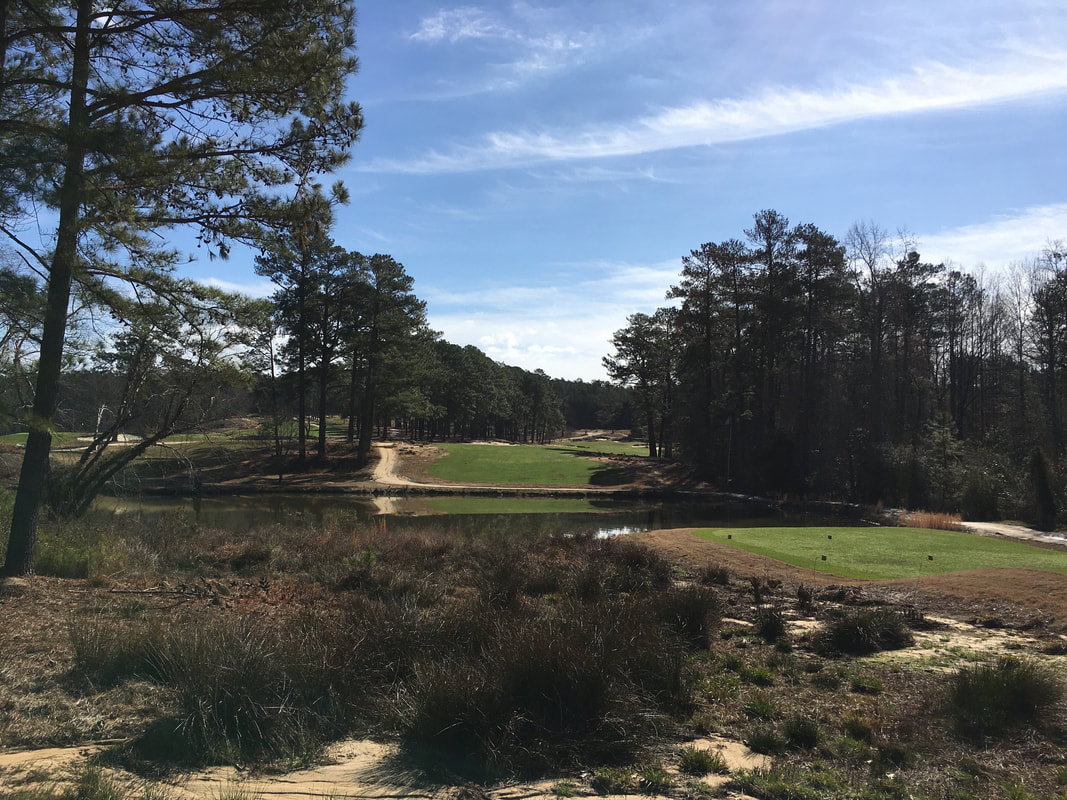
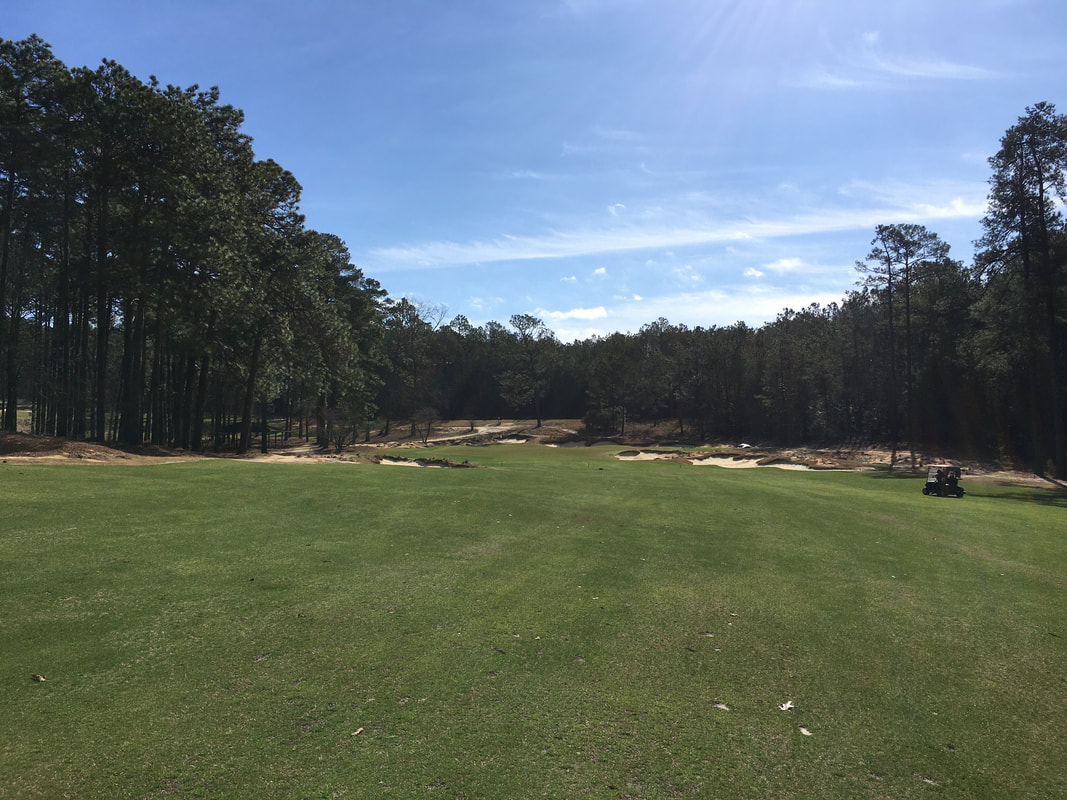
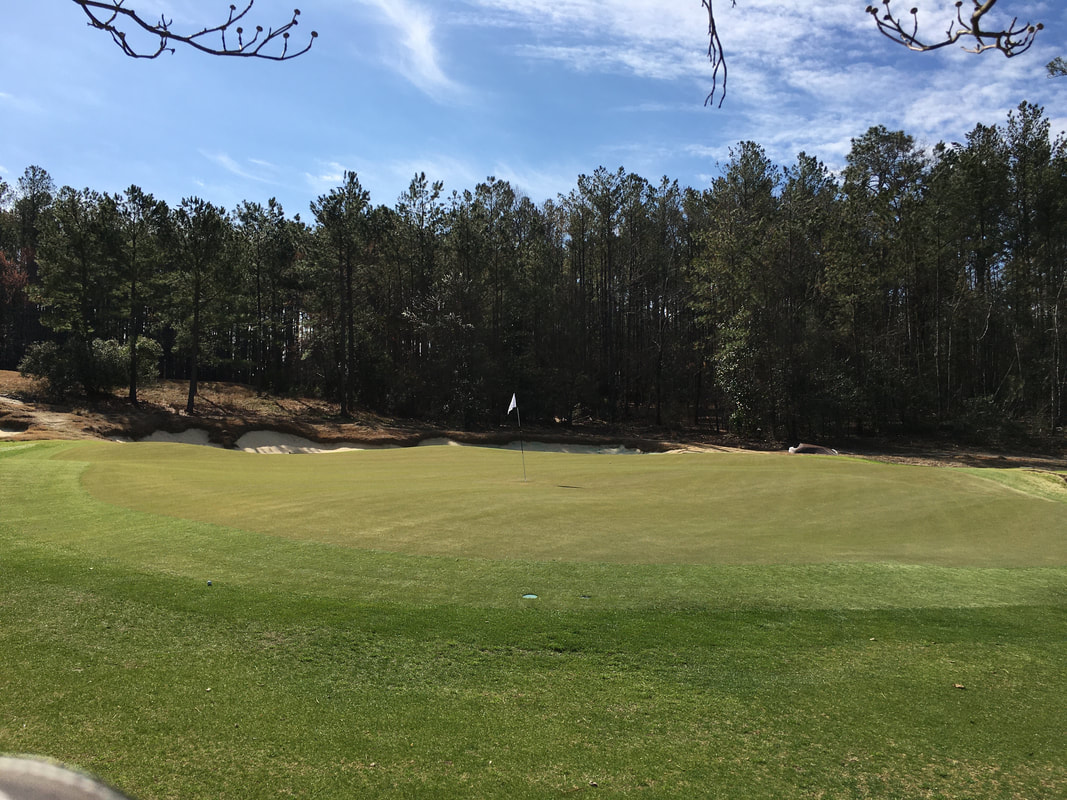
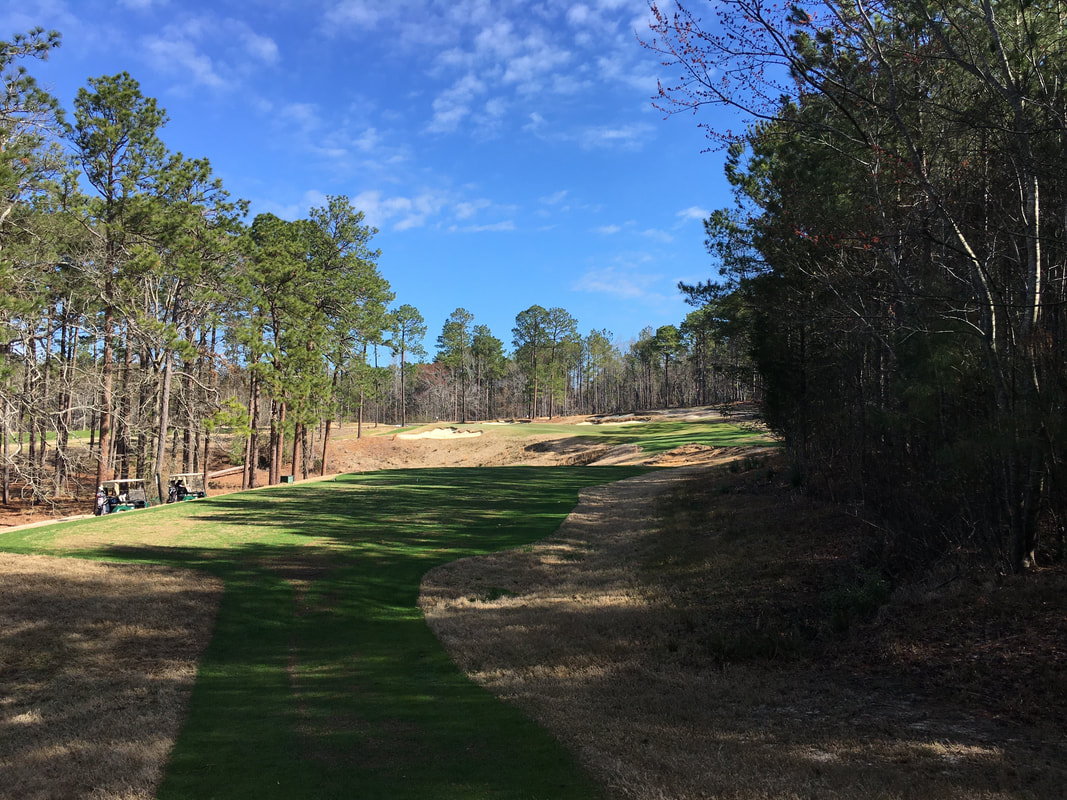
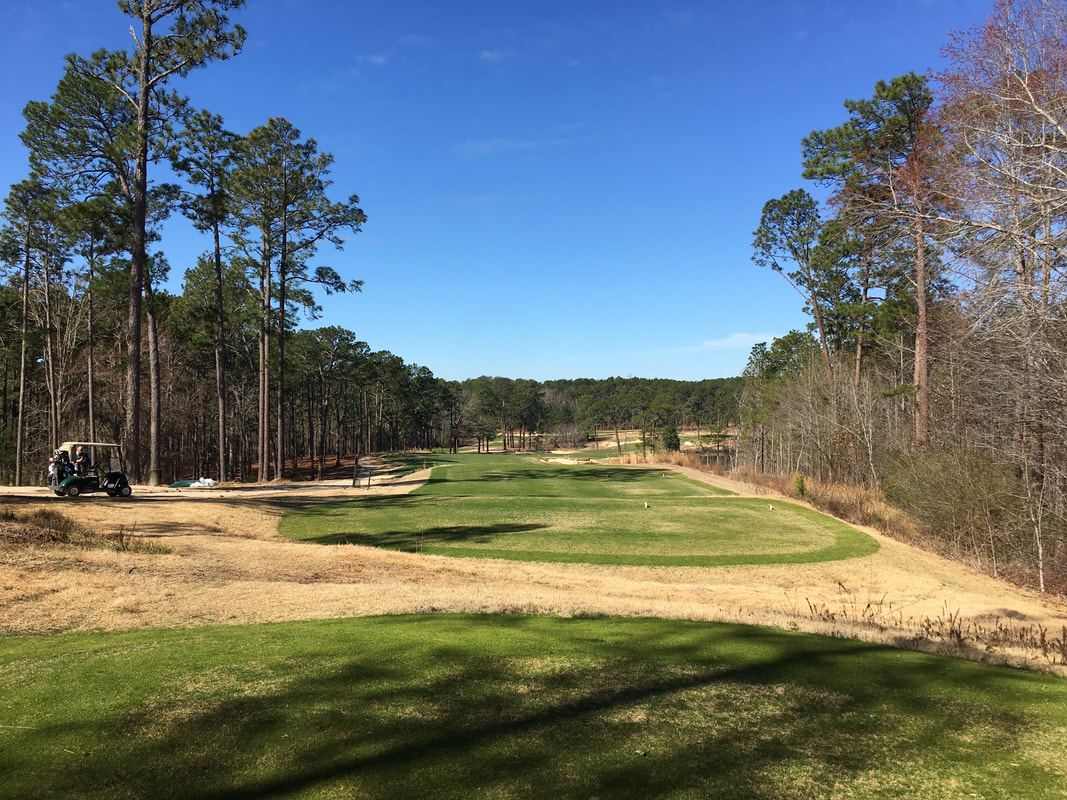
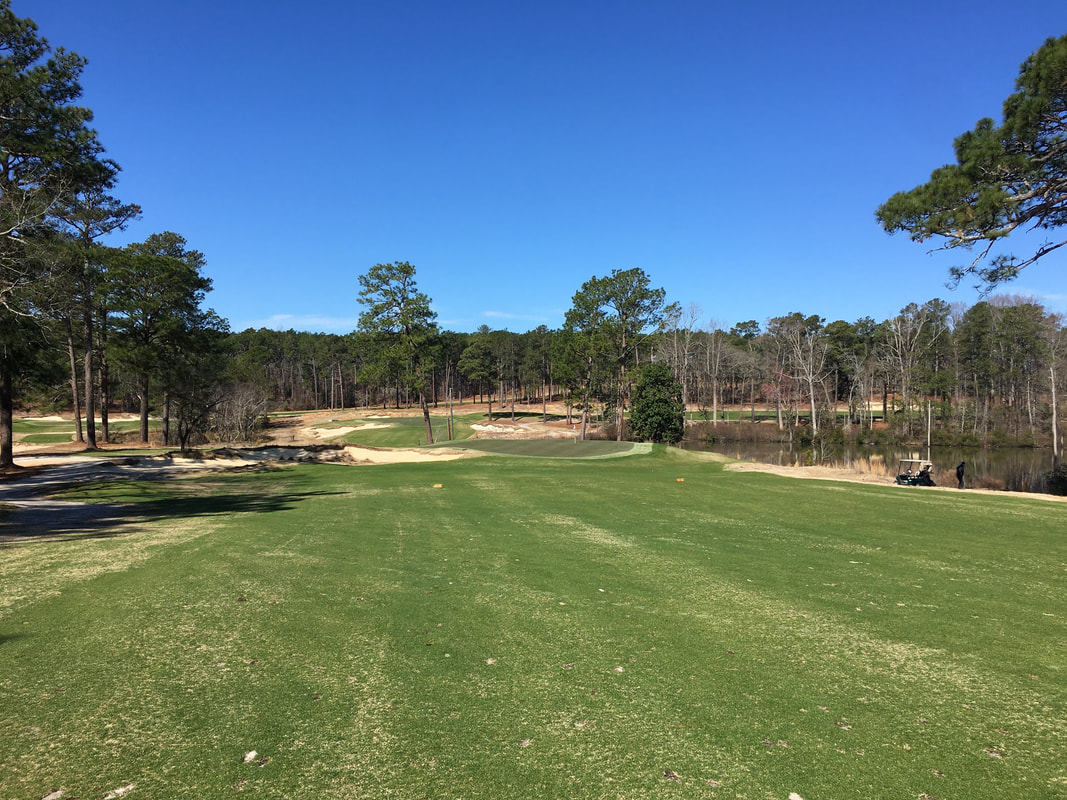
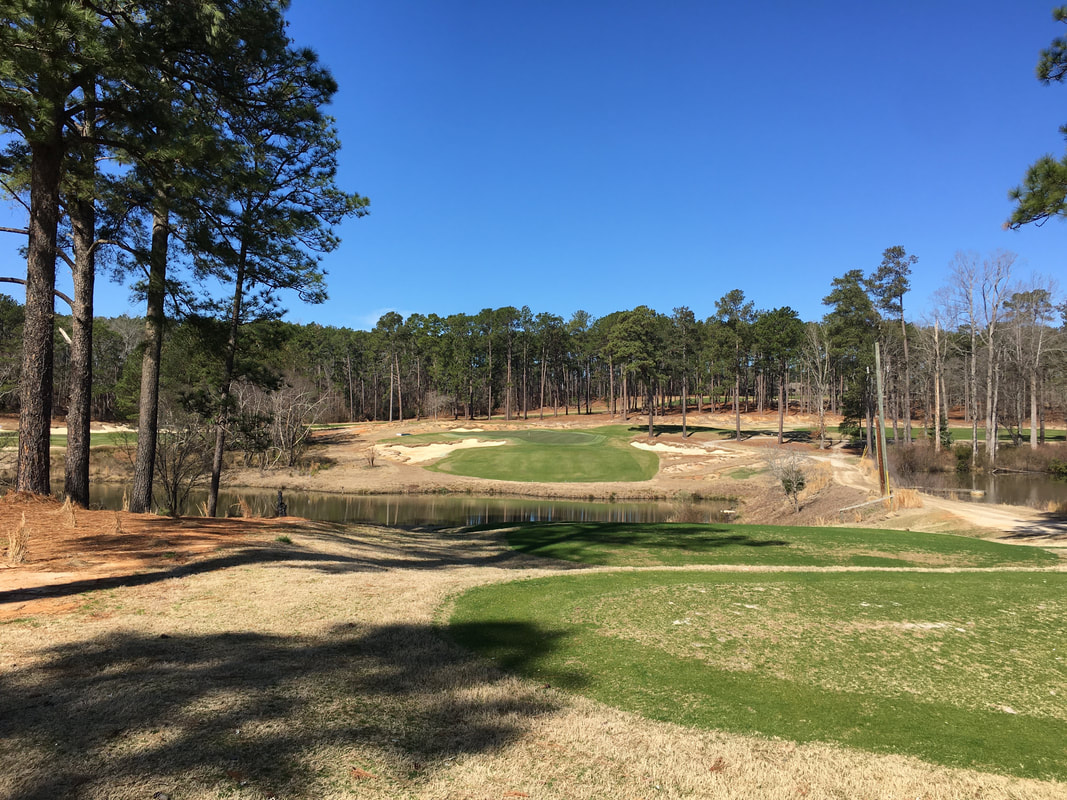
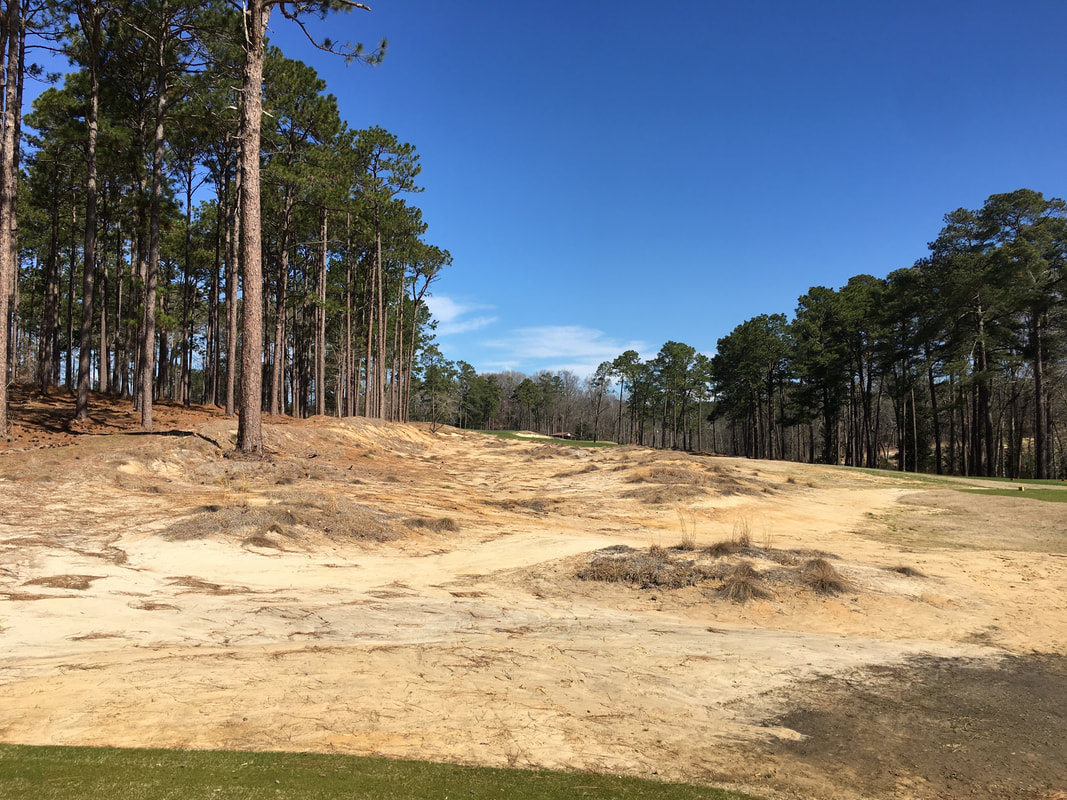
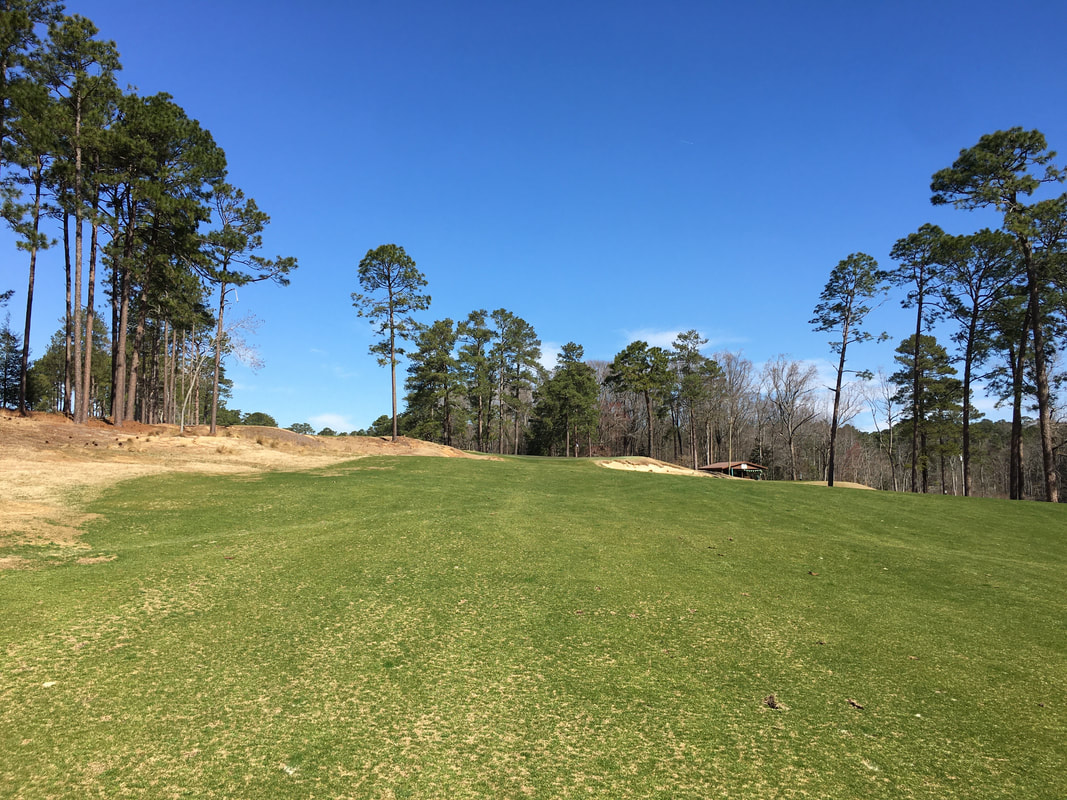
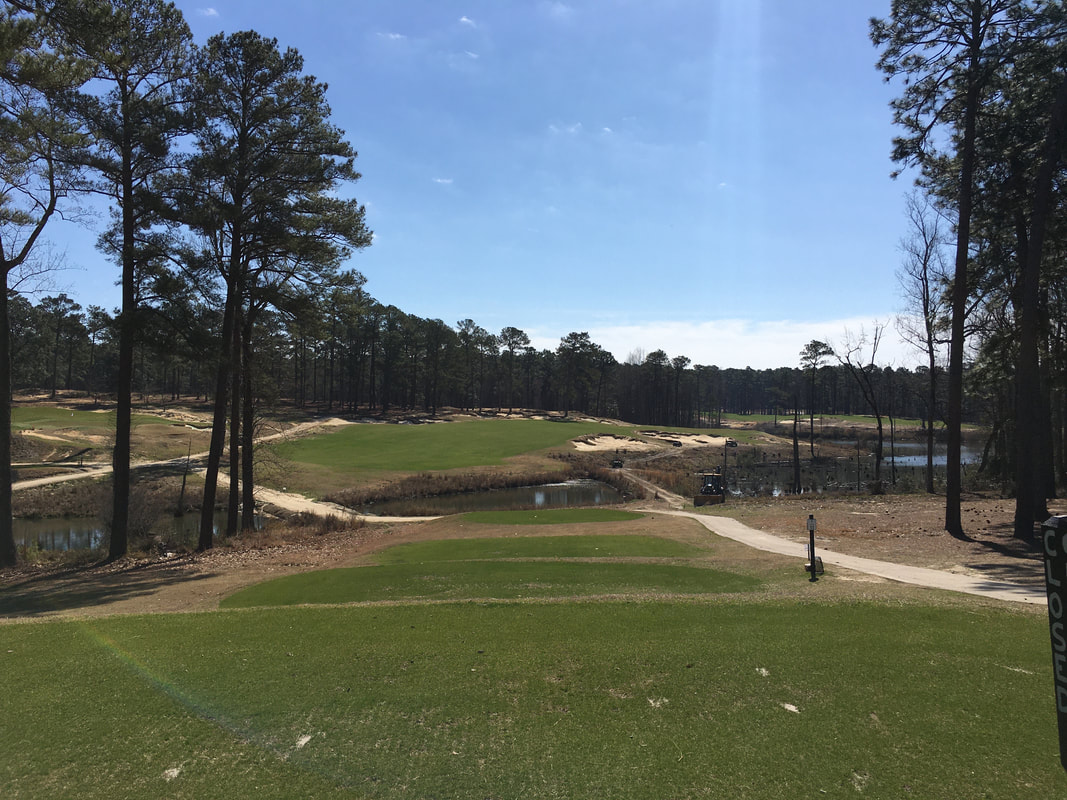
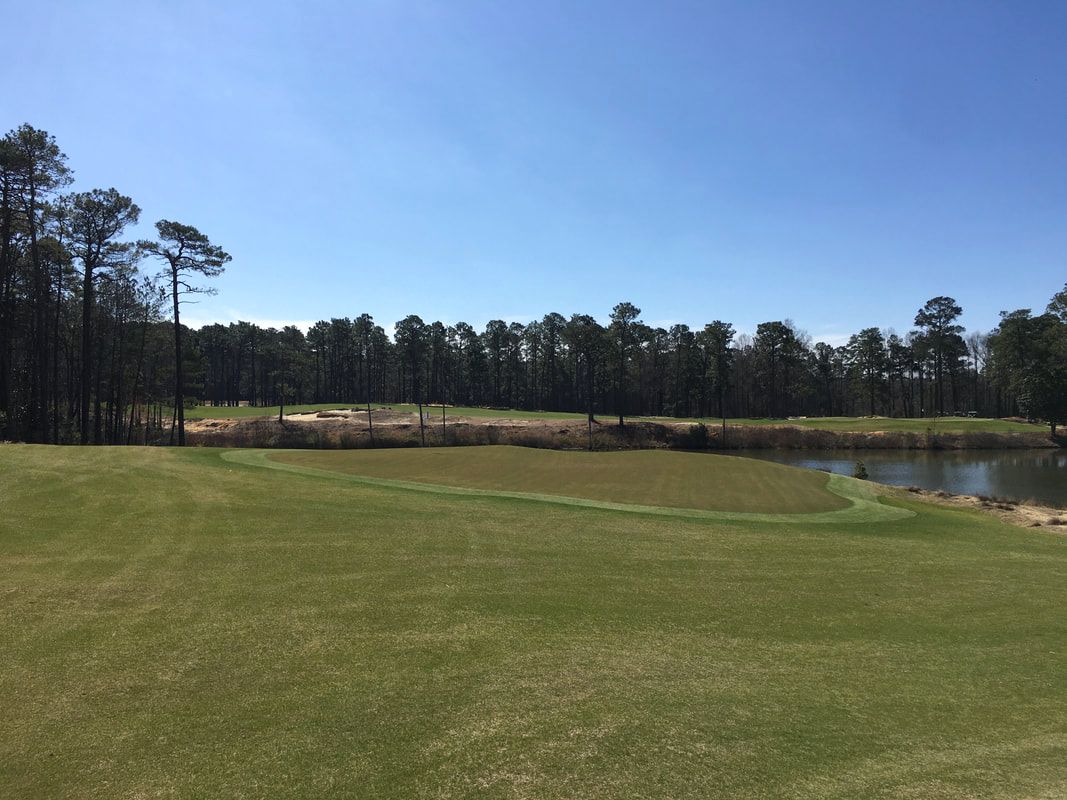
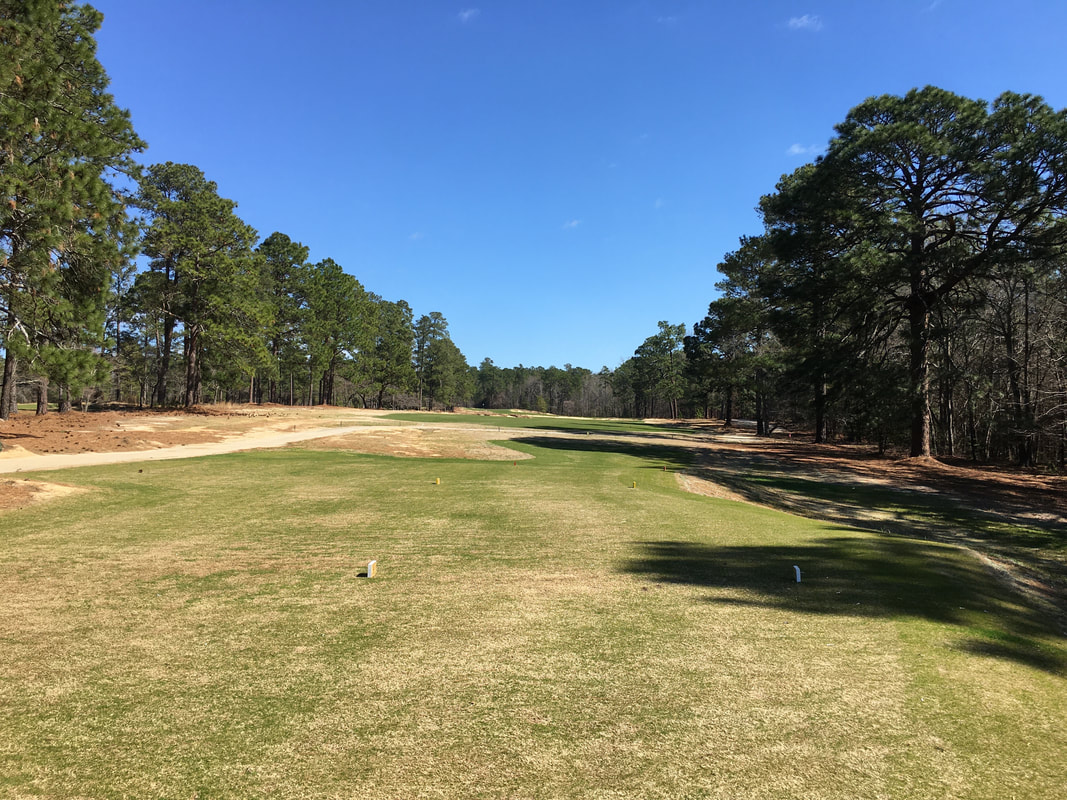
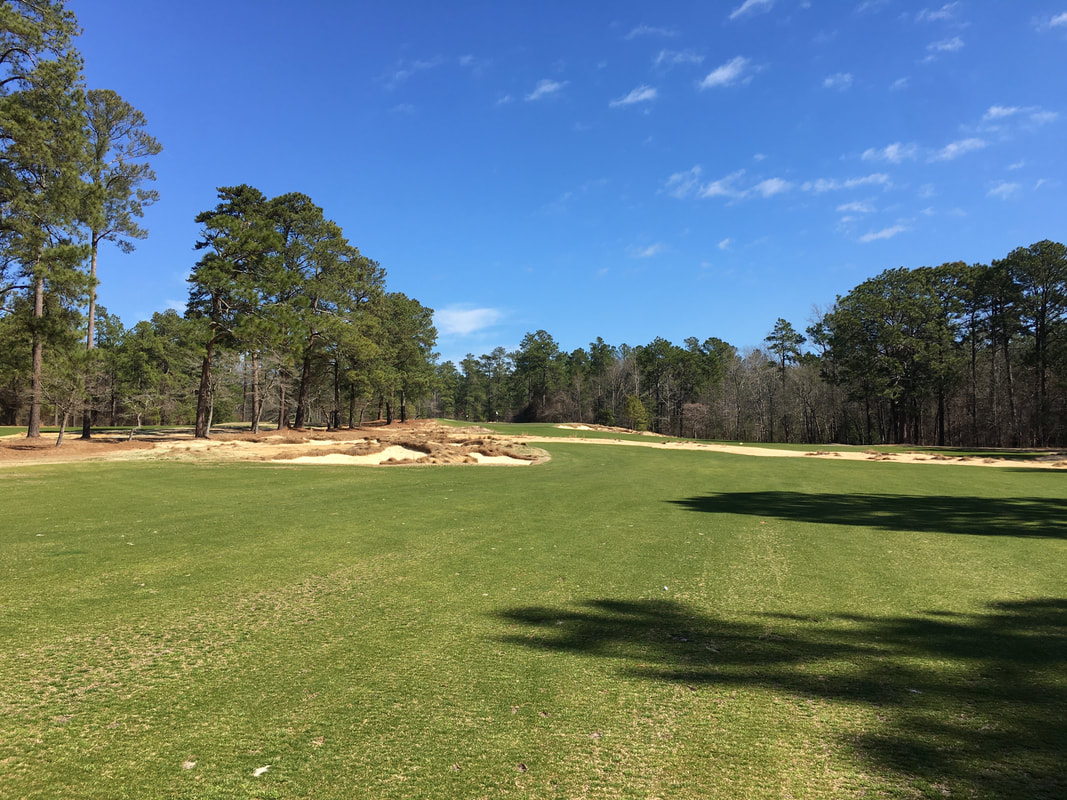
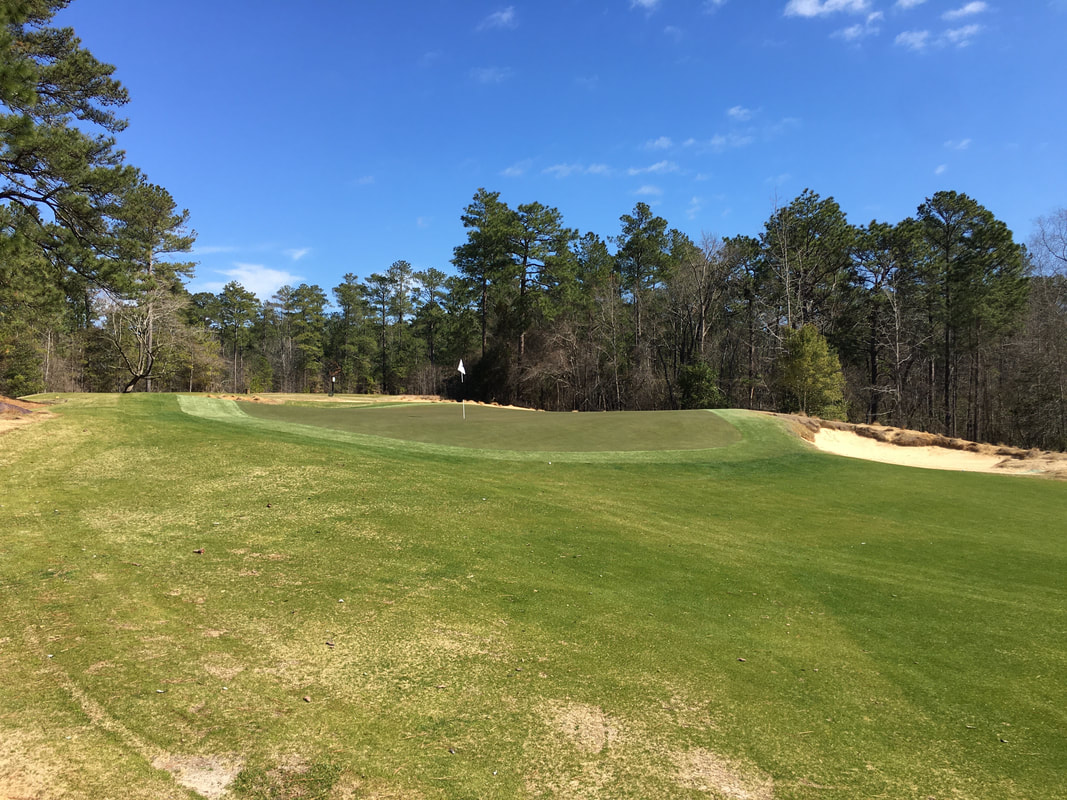
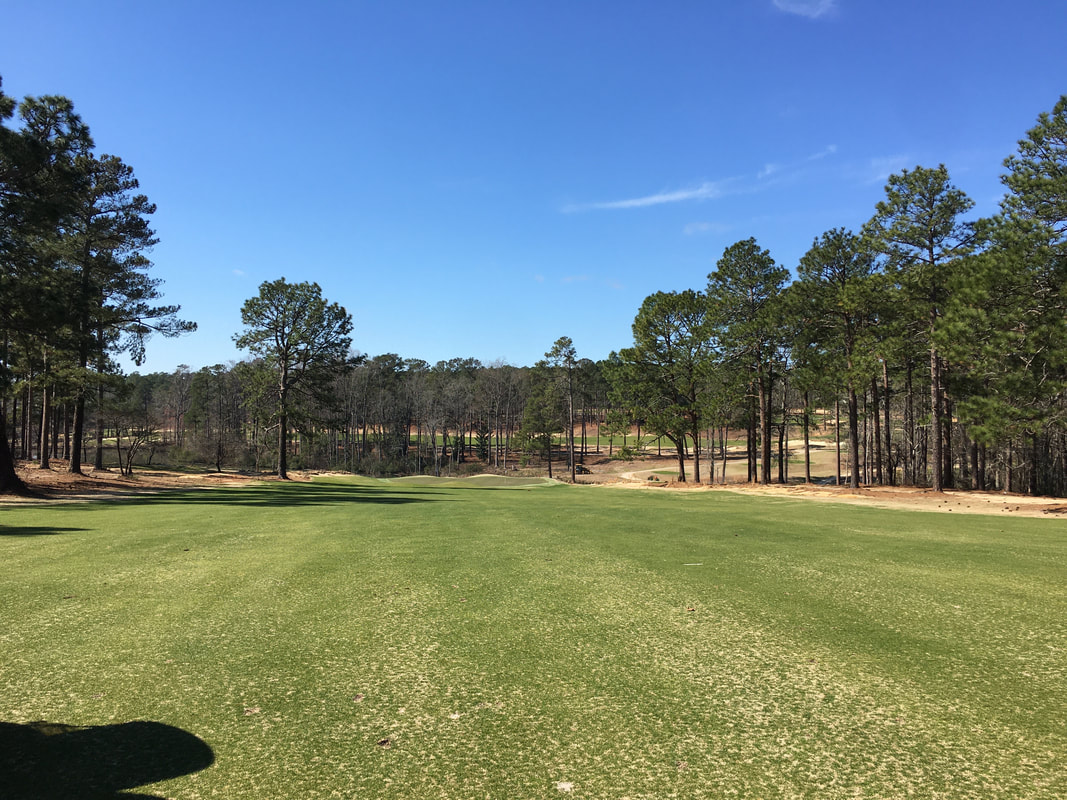
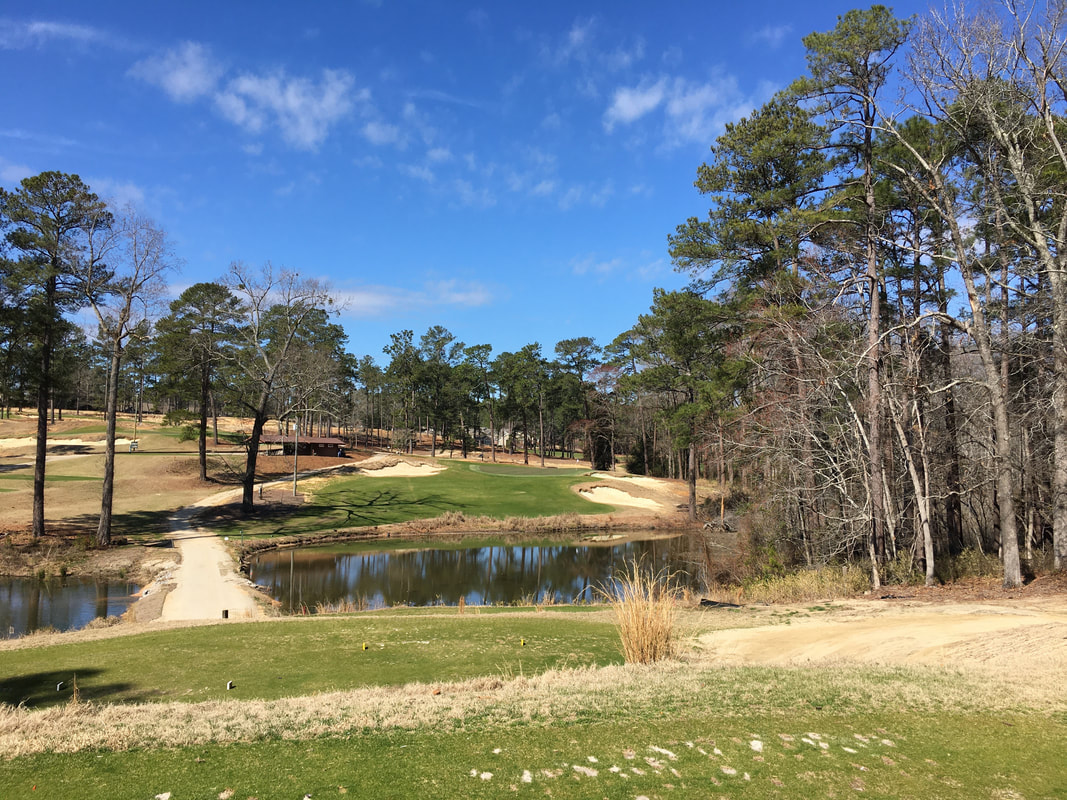
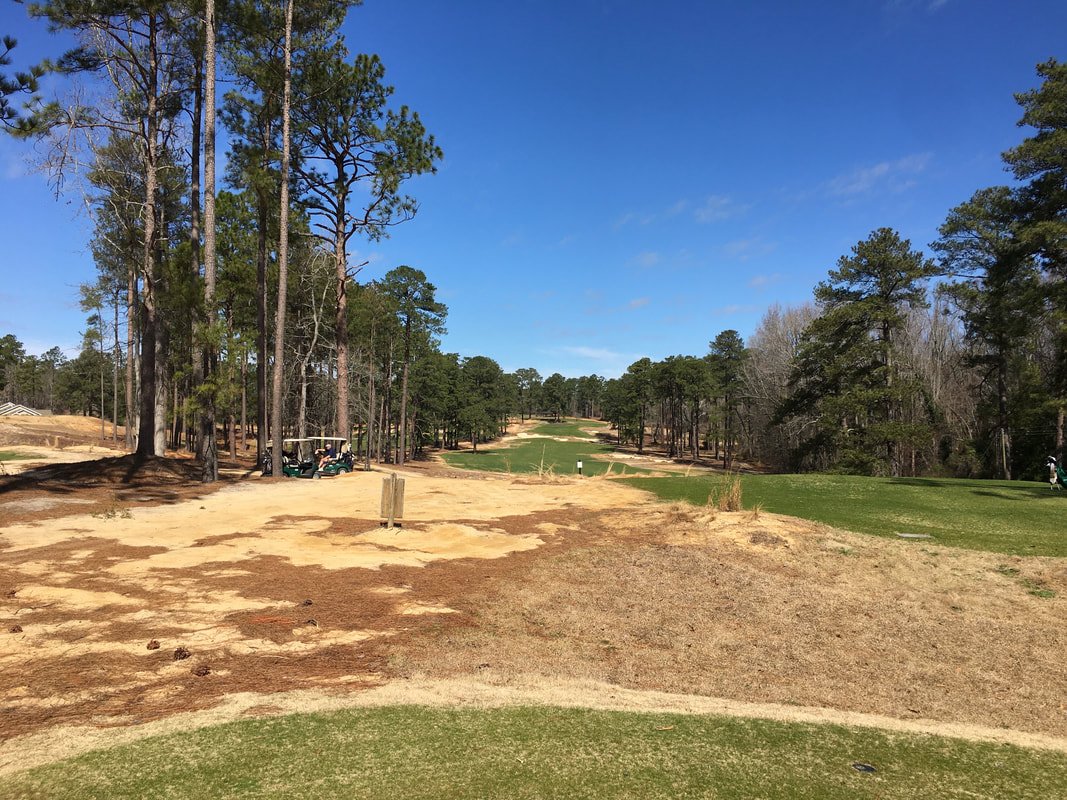
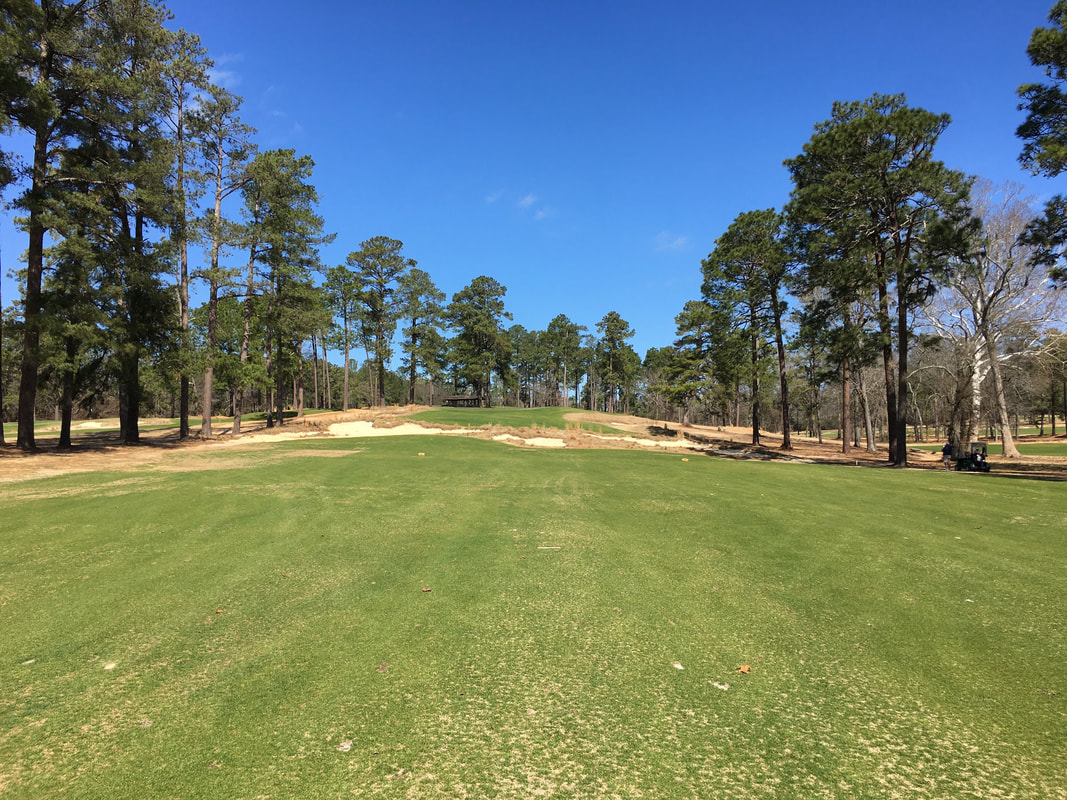
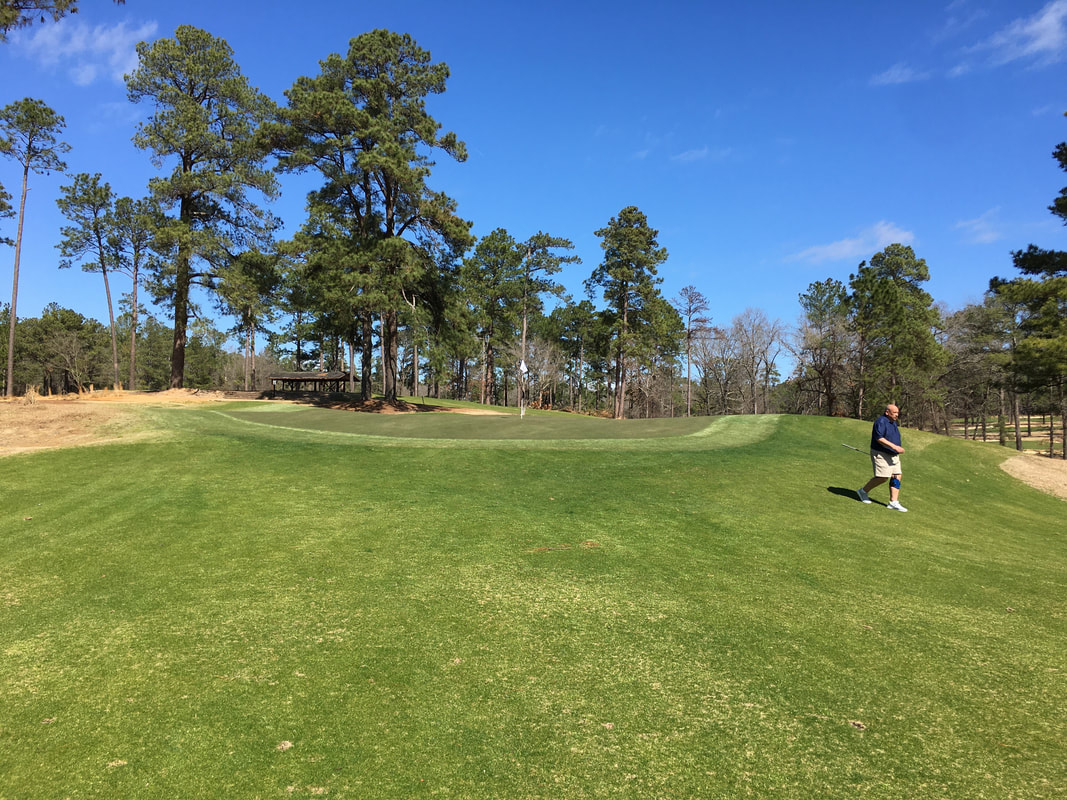
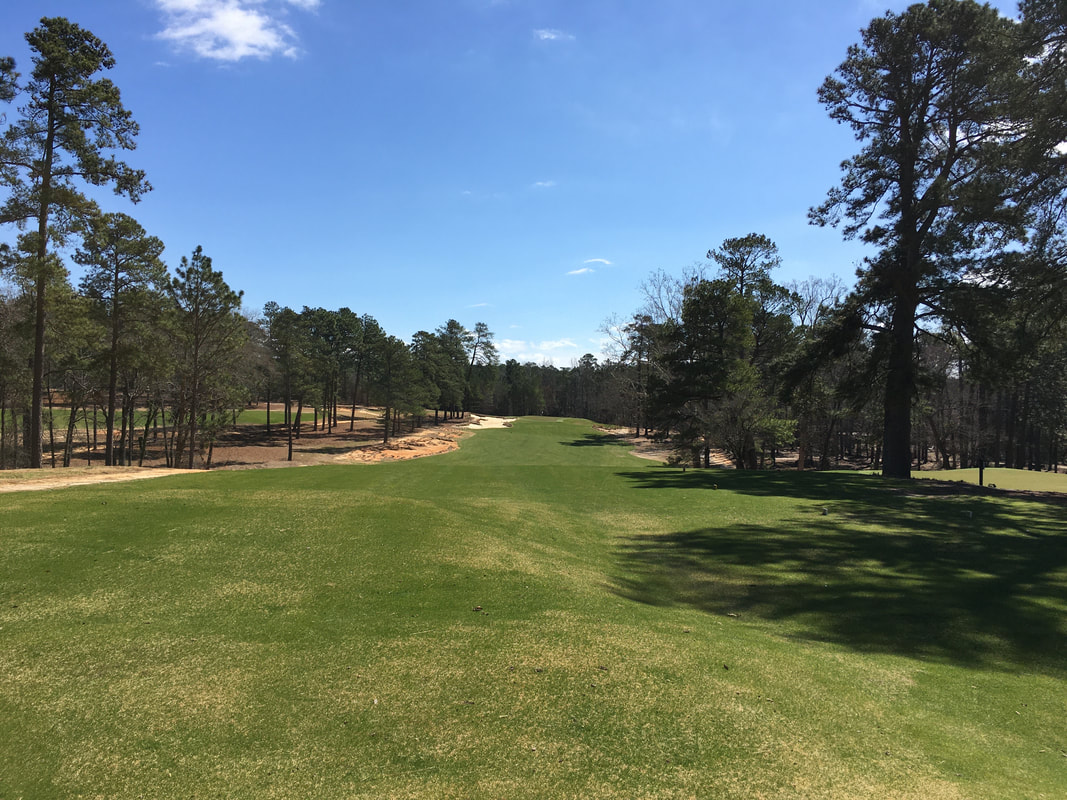
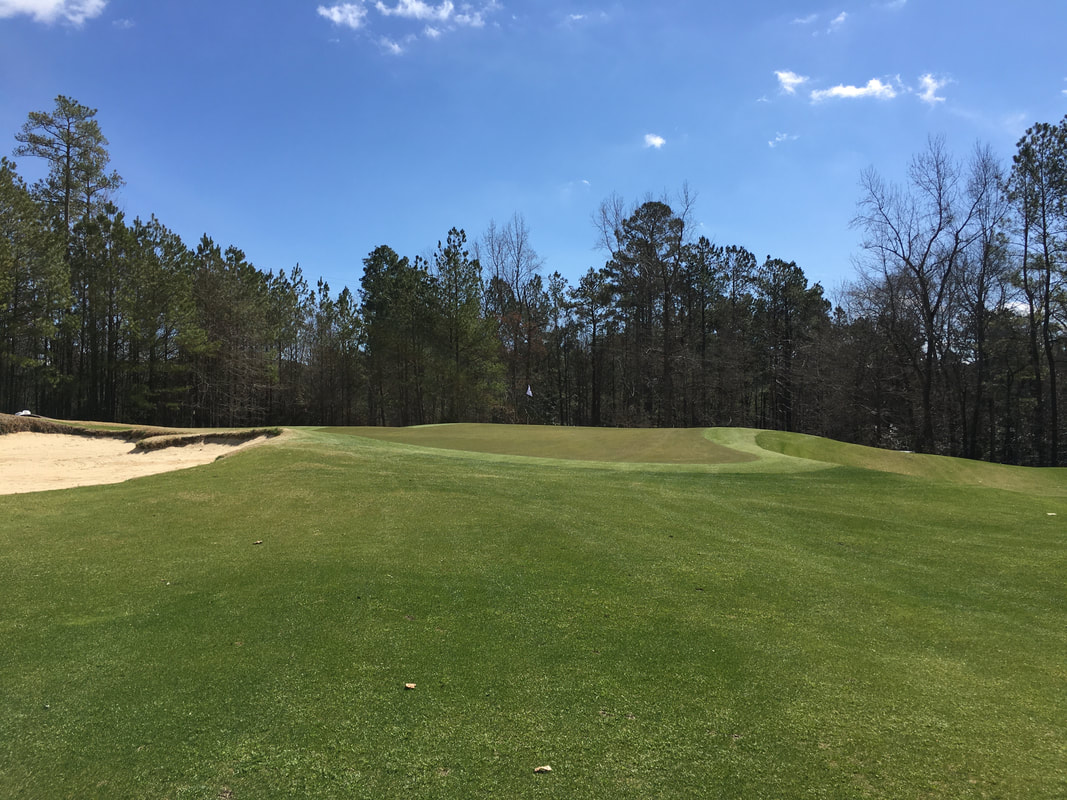
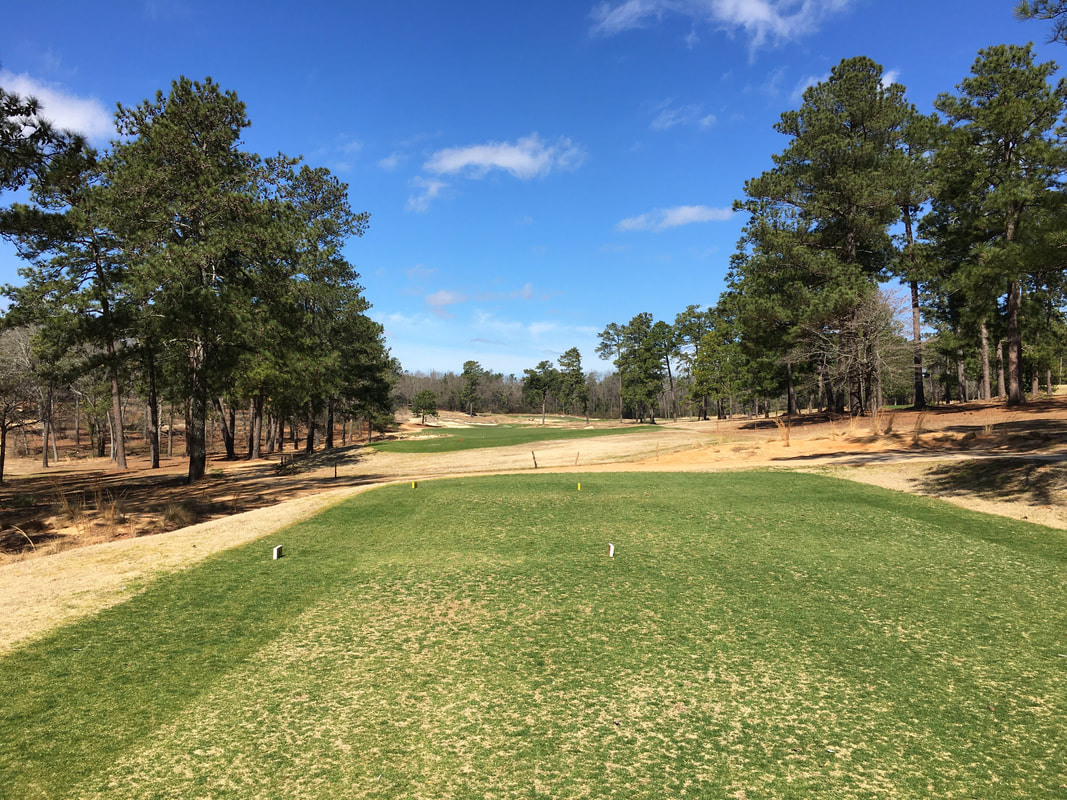
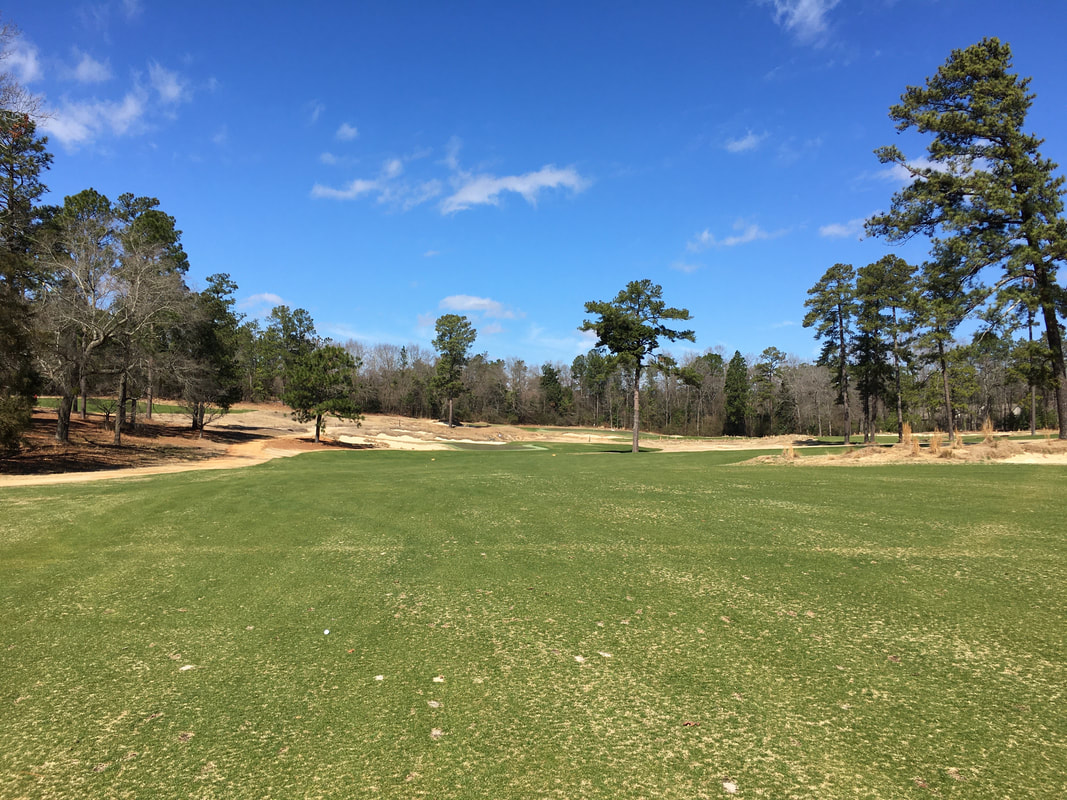
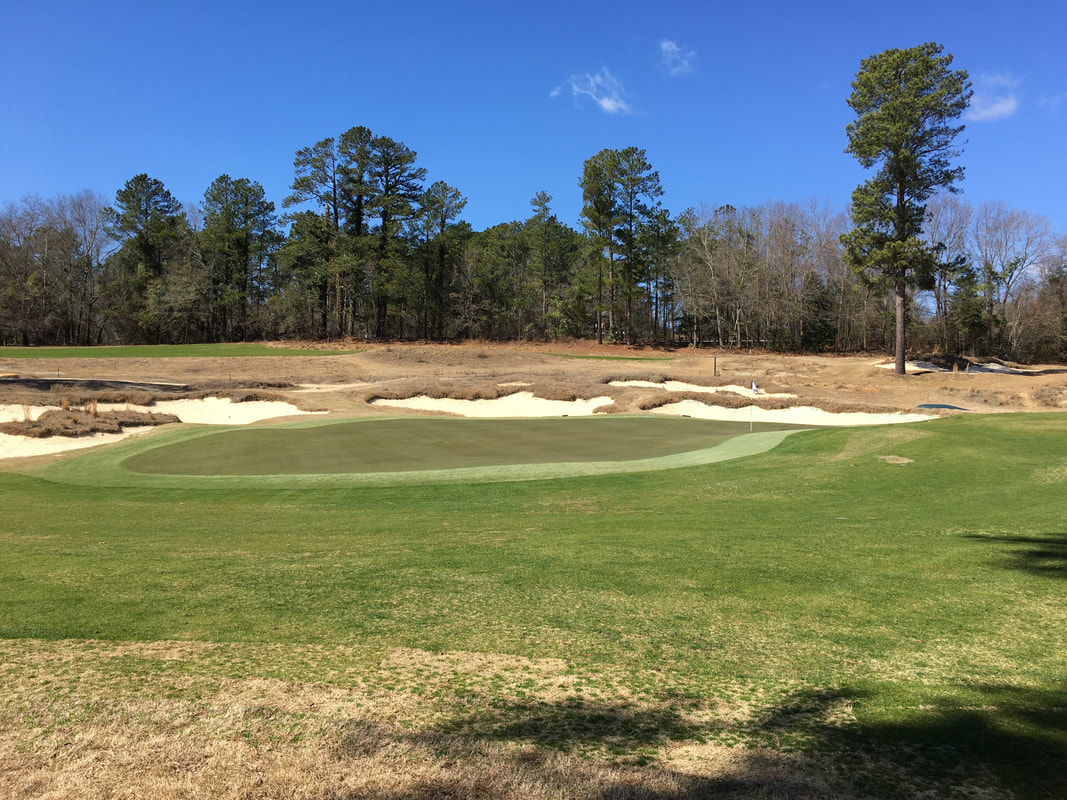
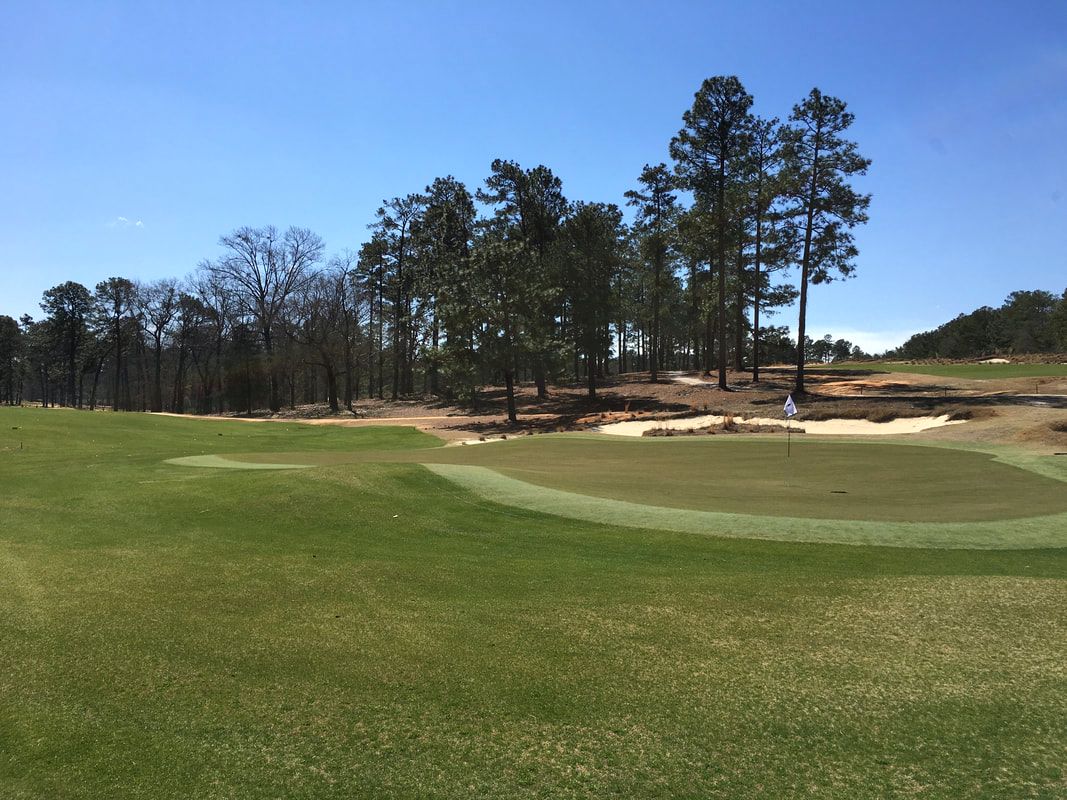
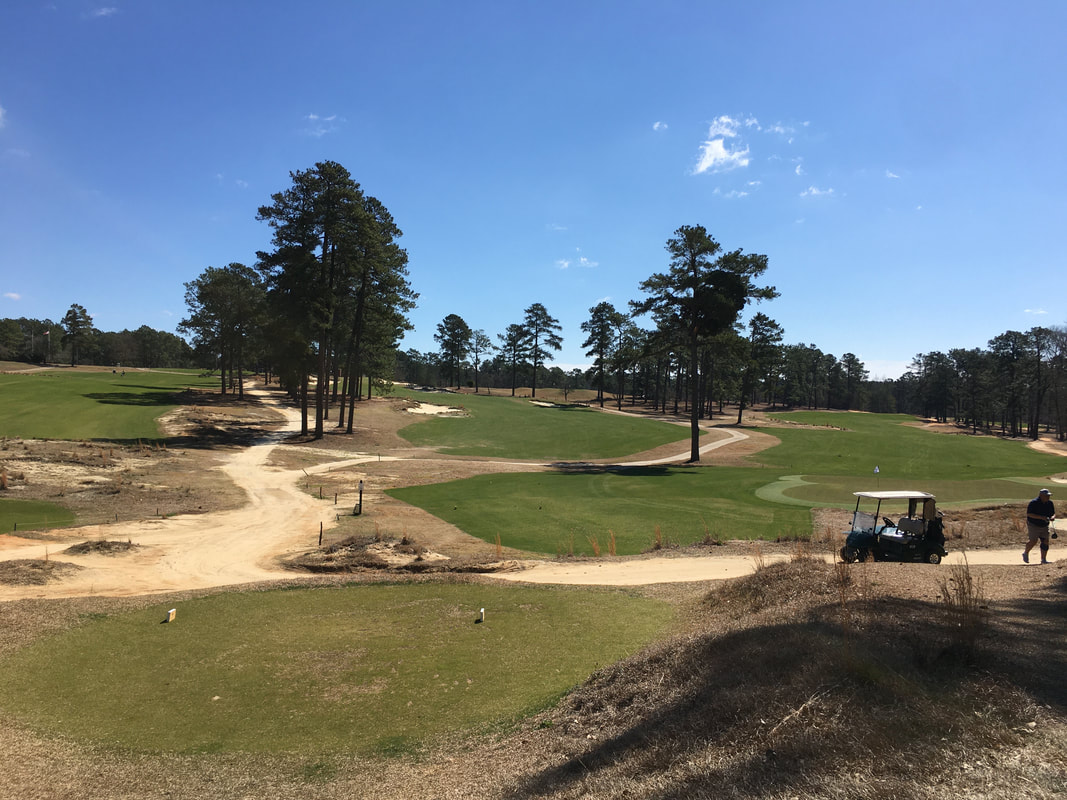
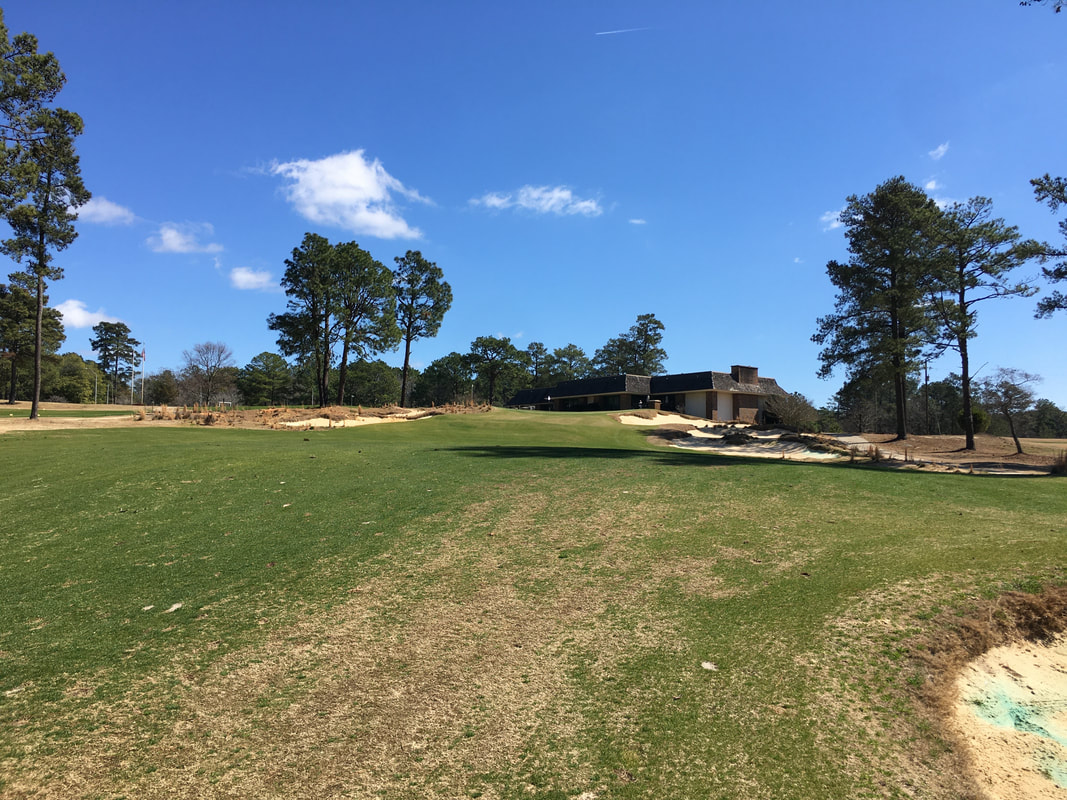
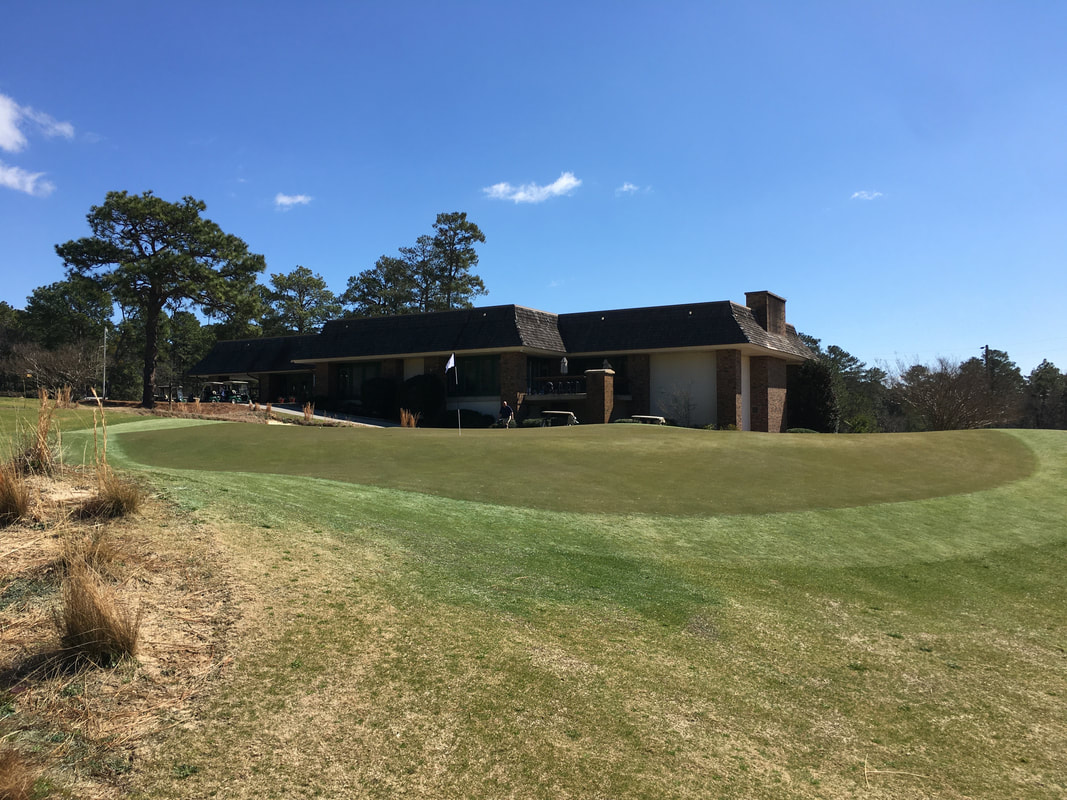
 RSS Feed
RSS Feed